Rolex Submariner 116610LN vs Omega Seamaster Diver 300m
THE battle of the luxury dive watches...
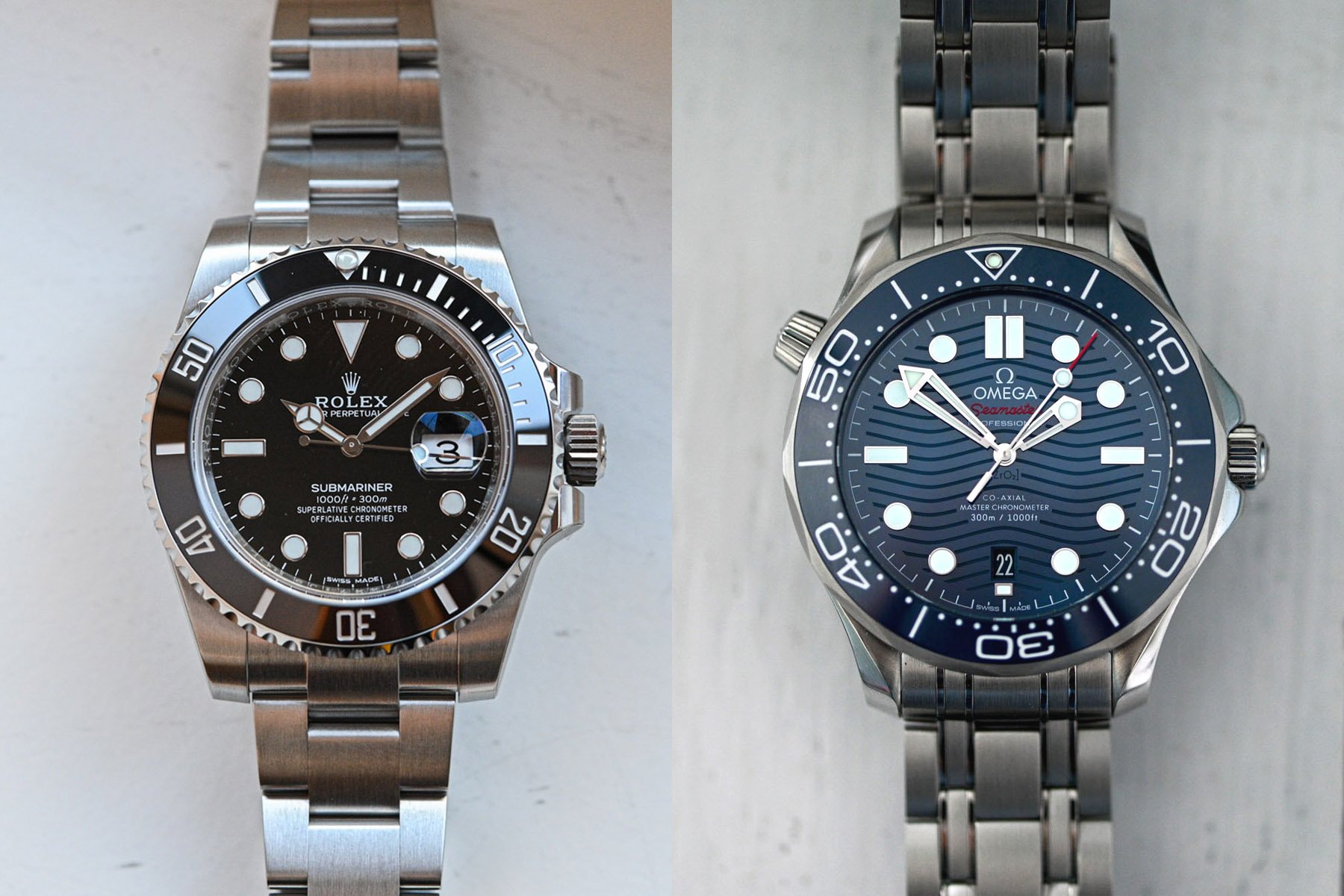
In the world of diver’s watches, there are two major ones, two that are well known to you and even to many people who are absolutely not into watches. Sure, there are quite a few iconic dive watches, impressive dive watches, but in reality, taking sales numbers into account, the two best-known and most recognizable dive watches are the Rolex Submariner and the Omega Seamaster. We’re going to have a face-off with the Rolex Submariner 116610LN and the Bond watch, the blue version of the Omega Seamaster Diver 300m that was introduced in 2018.
A bit of history
The blueprint for the dive watch as we know it today is often credited to Blancpain and its Fifty Fathoms. The watch was designed by Jacques Fiechter, Blancpain CEO at the time and an early scuba diving fan. It was later adopted (with the addition of magnetic shielding) by the French Special Forces Combat Swimmers, as their comander Robert Maloubier, got the task to design a purpose-built dive watch that could withstand a depth of at least 50 fathoms, which equals approx. 91 metres. The Lip-Blancpain Fifty Fathoms was introduced in 1953.
Sure, Blancpain beat Rolex in introducing the Fifty Fathoms ahead of the Submariner, but both brands had been working on a dive watch with a black dial, luminous markers, serious water-resistance, a screw-down crown and a rotating bezel, pretty much at the same time. According to Rolex, the Submariner went into production in 1953, however, it was officially shown to the public and press during Baselworld 1954. The Blancpain Fifty Fathoms went on sale in 1954… so to me, it is impossible to credit only one of these two brands.
EDIT: As some commented, the Zodiac Sea Wolf was also introduced in 1953, but since I wanted to focus on a black rotating bezel, I chose not to mention it.
A few decades earlier, Rolex was the first to introduce a waterproof watch to the market (1926) featuring its Oyster case. In 1932 Omega introduced its first waterproof watch named Marine, which featured a protective rectangular case into which the watch slid in. And a few years later, Panerai created the first Radiomir for the Italian Navy. But none of these resembles the dive watch as we know it today, which can really be credited to Lip-Blancpain and Rolex. These two companies laid the foundations for dive watches as outlined in the ISO 6425 standard for diving watches.
A Dive Watch is a watch designed for underwater diving that features, as a minimum, a water-resistance greater than 1.0 MPa (10 atm), the equivalent of 100 m (330 ft). The typical diver’s watch will have a water-resistance of around 200 to 300 m (660 to 980 ft), though modern technology allows the creation of diving watches that can go much deeper. A true contemporary diver’s watch is in accordance with the ISO 6425 standard, which defines test standards and features for watches suitable for diving with underwater breathing apparatus in depths of 100 m (330 ft) or more. Watches conforming to ISO 6425 are marked with the word DIVER’S to distinguish ISO 6425 conformant diving watches from watches that might not be suitable for actual scuba diving. These are the requirements:
- Equipped with a diving time indicator (e.g. rotating bezel) – allows for reading of the diving time with a resolution of 1 min or better over at least 60 min
- Clearly distinguishable minute markings on the watch face
- Adequate readability/visibility at 25 cm (9.8 in) in total darkness
- The presence of an indication that the watch is running in total darkness (running second hand with a luminous tip or tail)
- Magnetic resistance
- Shock resistance
- Chemical resistance (test water solution has a salinity comparable to normal seawater)
- Strap/band solidity
I think it is incredibly impressive that the Rolex Submariner has remained almost unchanged for the past decades. Sure, it evolved – and it evolved seriously. It’s like an old Porsche 911 can be recognized as the ancestor of the current 992, the latest Porsche 911, in the same vein the first Submariner ref. 6204 can be easily recognized as the ancestor of today’s Submariner Ref. 116610LN.
While the Submariner has stayed impressively close to its forefather from 1953, the Seamaster has seen many variations and even today it’s available in a plethora of choices. The versions we’re gonna put side by side, or head-to-head, are the latest Submariner Date with ceramic bezel Ref. 116610LN and the latest Seamaster Diver 300m with blue ceramic dial and bezel (Ref. 210.30.42.20.03.001).
But let’s first take a quick look at how they evolved…
The Submariner was introduced in 1953 and today there are basically two variations, one with date and one without date. There are some variations on the standard steel Submariner, but Rolex kept the well-known dive watch as a dive watch. No additional functions have been added and the only variations are in the material; there are versions in white gold, yellow gold and a mix of steel and gold. That’s it. This means that the Submariner is probably the most recognizable watch in history and the most iconic watch ever created.
Over time, the movement has been upgraded several times, the depth rating went from 200m to 300m, the crystal went from Plexiglas to sapphire, luminescent material was also upgraded and the case and bezel too. Consider this the Porsche 911 of the world of watches. It grew a bit, got infused with a lot more technicalities, but the Submariner still looks like a Submariner.
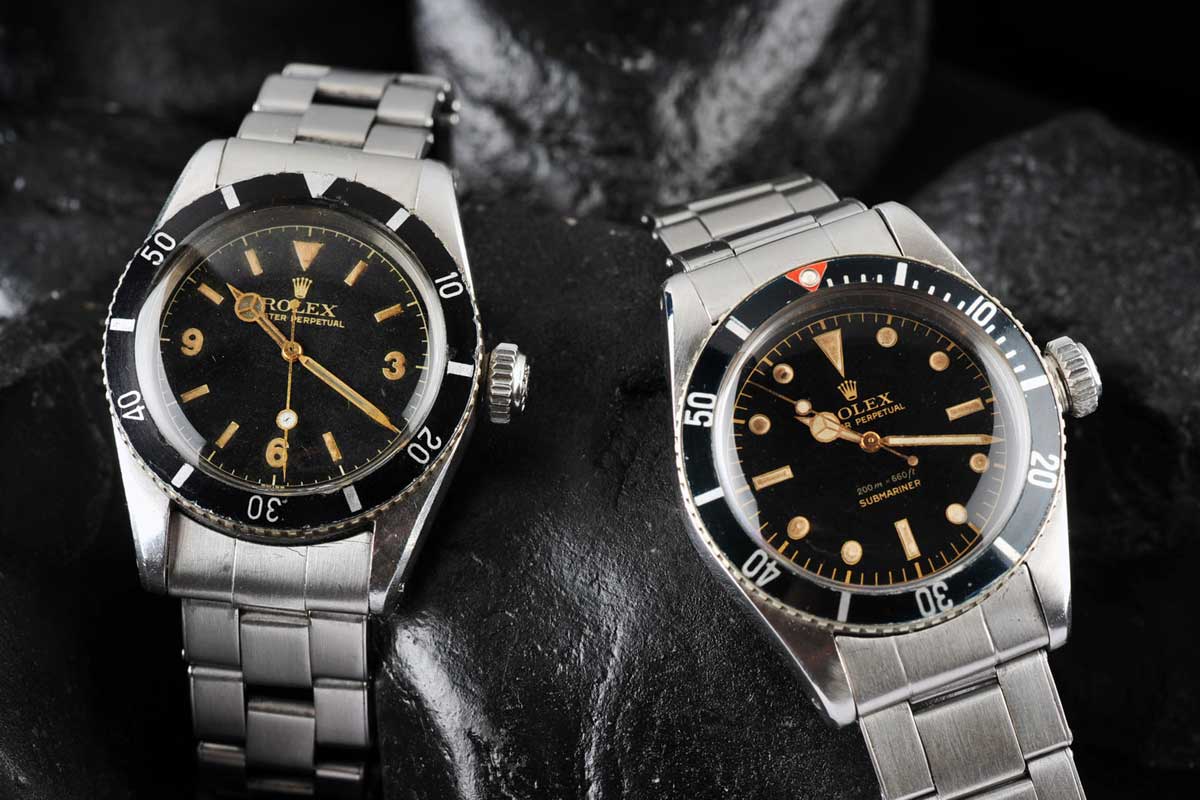
In 1971 Rolex introduced a dive watch that was based on the Submariner, with a higher depth rate and a helium escape valve. A more robust and more professional diver’s tool that goes by the name Sea-Dweller. This one could, sort of, be regarded as a third variation in the Submariner line.
The Seamaster has a much more diverse history. Initially launched in 1948, it did not feature a ‘significant’ depth rate, nor a bezel for divers to keep track of their ‘down-time’, nor a screw-down crown. Two years ago, we recorded an in-depth video on the Seamaster and in this video, Omega’s museum director explains how the 1948 Seamaster evolved to the various current collections in Omega’s line-up.
One of these collections that sprouted from the original 1948 Seamaster (which was heavily inspired by the timepieces made for the British military) is the current Seamaster Diver 300m collection. Upon its introduction in 1995, it was actually called the Seamaster Professional and soon after collectors nicknamed it SMP (Seamaster Professional).
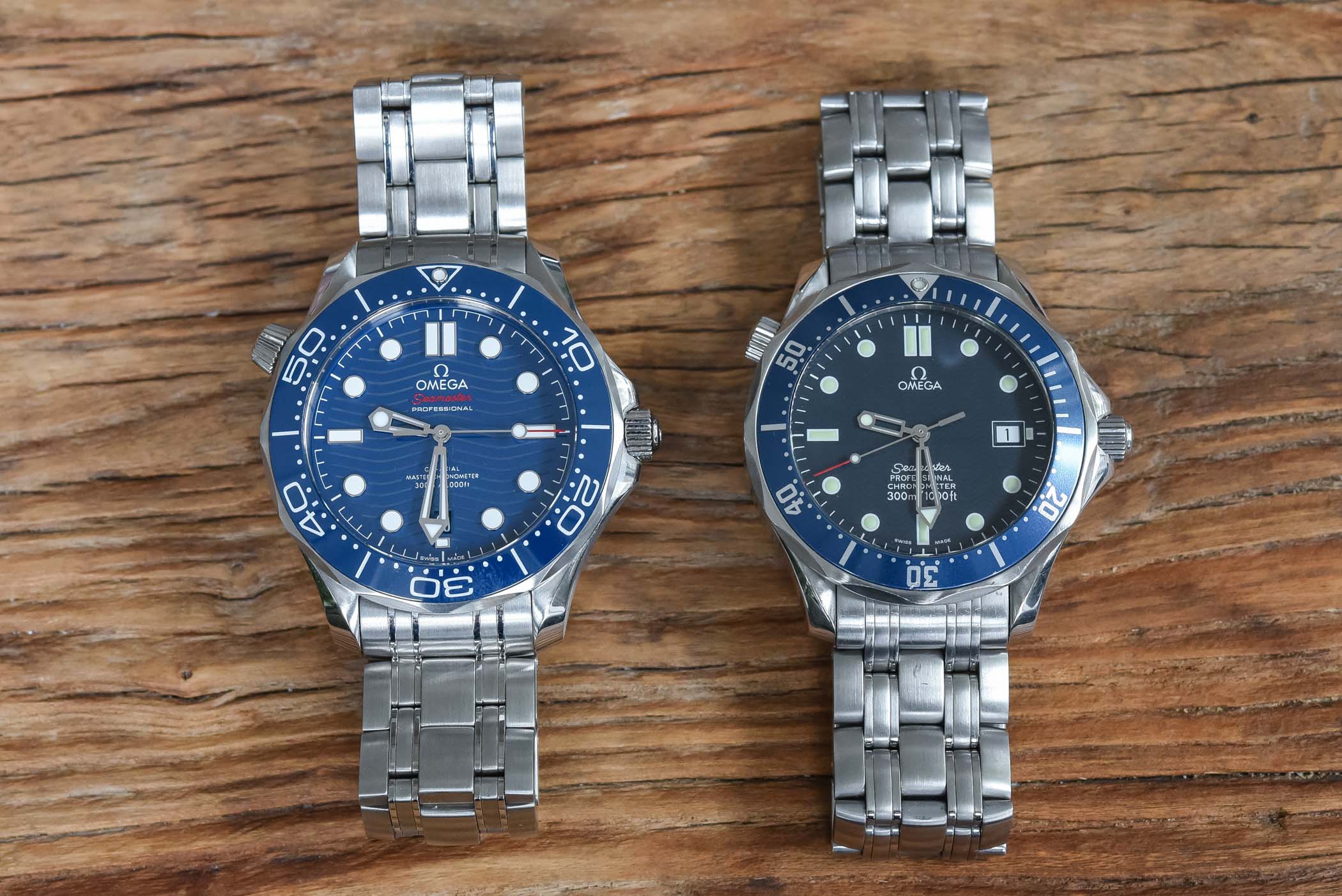
Other Omega Seamaster collections that sprouted from these 1948 Seamasters are the Aqua Terra collection, the Planet Ocean 600m, Seamaster 300 and even the De Ville collection. Similar to Rolex, Omega also introduced a heavy tool watch that comes in the shape of the Ploprof 1200m. In 1995, the first Seamaster Professional, the ‘ancestor’ of the watch we’re looking at today, was introduced, with a quartz movement, and it appeared in the Bond movie GoldenEye (this was reference 2541.80.00). A year later, the automatic model was introduced and later many more variations, including a chronograph and a GMT.
OMEGA Seamaster Diver 300M vs ROLEX Submariner Date
Now, let’s have a look at the case, bracelet, dial, hands, and movement specifications of both watches. How do they compare? The watches in question are the Rolex Submariner Date (Ref. 116610LN) and the Omega Seamaster Diver 300M (Ref. 210.30.42.20.03.001). In order to compare apples with apples, we will keep a strong focus on specifications.
For starters, we’ll focus on the case and the bracelet. As said, first the specs and then the opinion and ’emotions’.
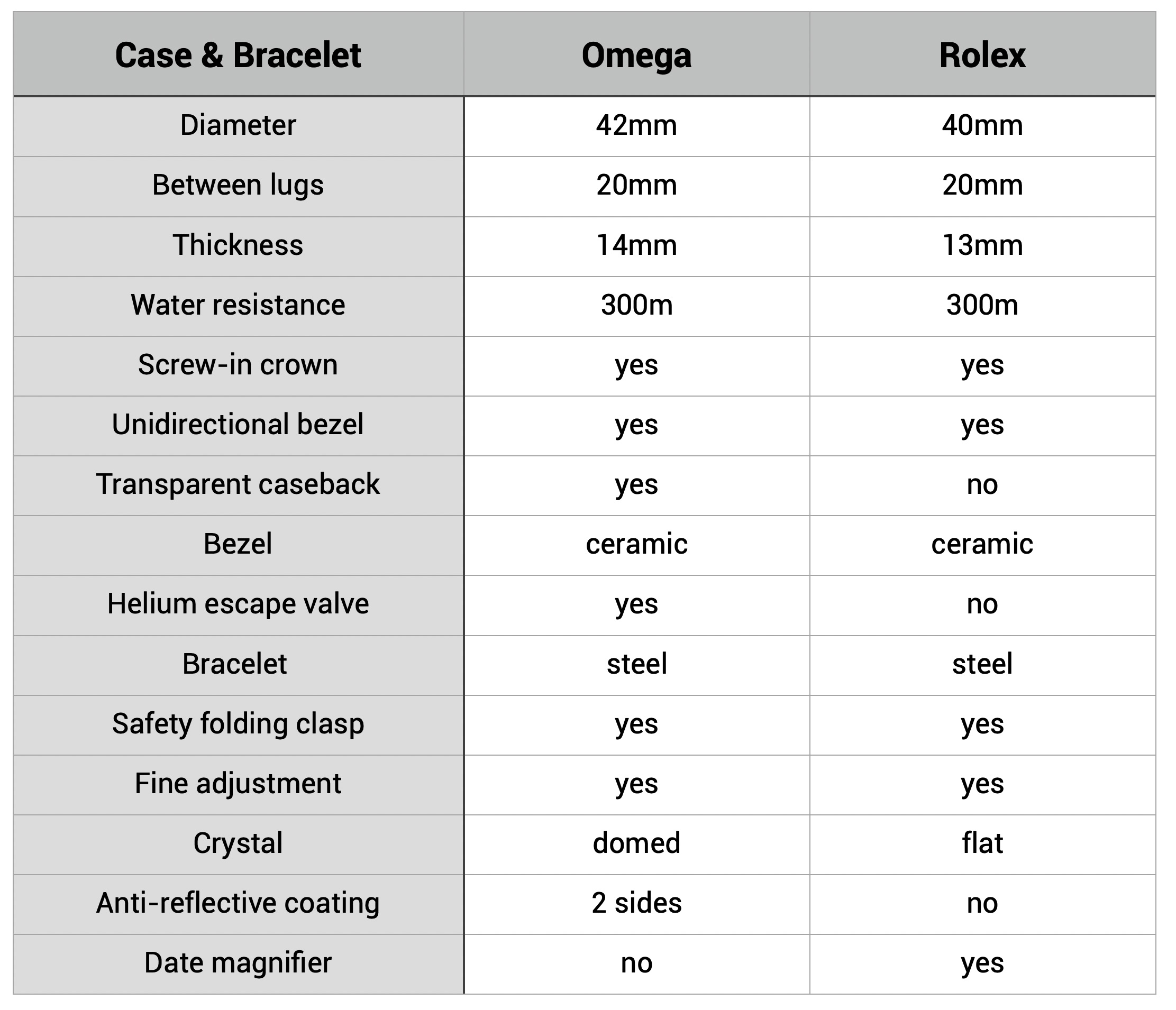
SIZE/PROPORTIONS – So the differences are there, but there are not that many differences. While the Submariner measures 40mm in diameter, the Seamaster is 2mm larger and measures 42mm in diameter. Also in height, the Sub is slightly more compact, measuring 13mm and the Seamaster is 1mm thicker at 14mm. This extra 1 millimetre is due to the sapphire crystal in the caseback. To some, these differences might be insuperable, but on my wrist, I hardly felt any difference in size. Both are not too big, not too small, rather pleasantly sized dive watches. So to me, that additional 2mm is not felt, although the approx. 20 grams of extra weight that the Seamaster packs is felt. Nothing bad, but the Seamaster has just a tad more ‘heft’ on the wrist.
MAXI DIAL AND FAT LUGS – One thing that Rolex changed when it introduced this particular generation of Submariners is that the lugs became thicker, the shape of the crown guard changed, and hour markers and hands became bigger – the latter is often referred to as maxi dial. Personally I’m no fan of the maxi dial and of the thicker lugs that make the Submariner’s case look more squarish. That being said, it is simply the version that we’re looking at today, so this will be added in the final equation.
SIMILARITIES – Both watches have a depth rating of 300 metres and although I do not know how Rolex tests its watches, I know that Omega designed the watch to withstand an extra 10% of water-resistance because of its METAS certification (Editor’s note: this is an additional 10% on top of the extra margin that Omega already provides in order to meet with the ISO standard). One way or another, both will perform perfectly when put to the test.
Both watches have screw-down crowns and unidirectional bezels, but there is a major difference regarding the caseback! I don’t know about you, but I love to see the movement. We all know that Omega’s movements with the co-axial escapement, the anti-magnetic properties and the rather pretty finishing are absolutely superb. To be able to have a view on it is, to me at least, a big plus! And you don’t have that with the 116610LN.
BRACELET – steel bracelet, steel safety clasp with diver’s extension and fine-adjustment are provided with both models. Design is different and yes, the fine-adjustment and safety lock on the clasp works differently, but preferences will boil down to personal taste. The fine adjustment on the Seamaster works easier, as you can simply press a button and slide the bracelet’s end to the desired position. Are there drawbacks? Yes, the diver’s extension can come loose and you have to put that back in place again. For the Submariner, it’s a tiny bit more work to fine-adjust the bracelet’s length, but the diver’s extension doesn’t come loose.
HELIUM? – The Seamaster features a helium escape valve, while the Submariner doesn’t. Is it a necessary feature on dive watches of these characteristics? No, I don’t think so. Especially when you consider that 99% of these watches will probably only see some desk-diving action and never submerge to the depth they are designed to withstand. Visually though, I think the helium escape valve beautifully balances the Seamaster’s design. And funnily enough, on the Submariner, I don’t miss it and I think it looks good without an extra ‘crown’. On a purely functional side, I think the helium escape valve for these dive watches (not in general, but specifically for these) is superfluous.
SAPPHIRE CRYSTAL – The crystal on the Omega Seamaster is slightly domed and has been treated, on both sides, with anti-reflective coating. The crystal on the Submariner is flat, without anti-reflective coating and equipped with a ‘date magnifyer’. Personally I prefer the use of an anti-reflective coating on the crystal, although admittedly, with a flat crystal the need for this is less pressing. However that ‘pimple’ on the crystal… that’s a highly subjective topic and some will love it while others feel less charmed by this very recognizable Rolex feature.
CONCLUSION – The main thing that stands out in this part of the comparison is the see-through caseback of the Seamaster. Otherwise, built quality is equally impressive on both models and technical features are almost identical.
Dial and hands – Seamaster vs Submariner
Let’s move on to the dial and hands…
The Submariner that we looked at is the ‘normal’ steel version with its recognizable black dial. There more variations, like a steel Sub with green dial and bezel, a steel and gold version with blue or black dial, a full yellow gold version (black or blue dial and bezel) and a white gold version with blue dial and bezel.
The Seamaster we chose is the version with the blue dial and bezel, a.k.a. the Bond watch. Although James Bond has worn quite a few different Seamaster models, especially since Daniel Craig plays 007, the version that appeared in the Bond movie GoldenEye is to me THE Bond watch (and yes, I know that Bond also wore Rolex, Seiko, Breitling and many more, but still…) The Seamasters that sprouted from the Seamaster Professional introduced in GoldenEye come in many different colours (steel, gold, steel and gold) and with more colour variations for dials and bezels than Rolex. Additionally, there’s also a choice of complications like chronographs and GMTs.
Whether the dial is blue or black is a matter of personal preference, however, I must add that the fact that Omega’s dial made of ceramic adds a lot to the experience of wearing the Seamaster. The colours go from deep navy blue to dark grey with a hint of blue, to bright blue and the wave pattern is always present, no matter what the angle is. It looks pretty stunning and it brings so much more than any simple plain dial.
The black dial of the Submariner looks good, but the fact of the matter is, it’s a simple black lacquered dial. That’s it. On the other hand, the brand’s logo, the hands and markers, with the ceramic black bezel around, are so iconic that this simply adds a lot to the experience too, and despite its ‘simple’ execution it really looks good.
Whether the hour markers on the Submariner are in white gold, while the ones on the Seamaster are rhodium-plated doesn’t add much or anything actually, at least not to me. Same goes for the luminescent material used in the indices (hour markers) and hands. Chromalight or Super-LumiNova, in real life both perform very well.
CONCLUSION – To me, this section of the comparison ends in a draw.
Movement – Omega calibre 8800 vs Rolex calibre 3135
So let’s have a look at what’s under the hood, the engines of these iconic timepieces. Both brands have come a long way in terms of precision and chronometry. Both have spent a lot of money, time and effort on improving their movements and the results are impressive. In fact, both can be regarded as best in class and productions numbers are roughly comparable. So let’s see how they compare based on the specs…
CO-AXIAL ESCAPEMENT – Not necessarily to set the tone for this part of the comparison, but this has to be addressed. What Omega achieved with the co-axial escapement is unparalleled and second to none! After more than two centuries of Swiss lever escapement hegemony, Omega managed to industrialize an entirely new escapement and that’s absolutely brilliant. The idea came from none other than George Daniels, a British watchmaker, and in this Technical Perspective, we explain the nitty-gritty.
SPECS – Both the Omega calibre 8800 and the Rolex calibre 3135 are in-house developed and manufactured movements, both are automatically wound, both feature a date indication, both have bi-directional winding, both feature hacking or stop seconds, and both are Chronometer-certified by COSC. So far, everything seems pretty comparable and both models even feature a free-sprung balance.
But then come the differences… 55 hours of autonomy when fully wound for the Omega, while the Rolex stops after 48 hours. No major difference, but the 55 hours just gives you a bit more ‘freedom’ to leave the watch for more than two days on your nightstand before wearing it again (without having to set and wind it).
Si14 VERSUS PARACHROM – Omega opted for Si14, its own type of silicon, for the balance and balance spring. Rolex chose an a-magnetic alloy named Parachrom, so no silicon balance spring. That’s a deliberate choice as Parachrom is a metal alloy and can be repaired and altered like metal. This is not possible with a silicon balance spring, as this material is fragile and whenever something goes wrong with the Si14 balance spring, it has to be replaced by a new Si14 balance spring. That means service parts must be available. As for the balance, Omega also opted for Si14, but when I asked Rolex, they didn’t comment on the material used for the balance (hence the question mark).
MASTER CHRONOMETER – Besides the Si14 balance and balance spring, Omega has invested a lot in developing new metal alloys for many other parts in the movement that, when subjected to magnetism, will influence the watch’s precision drastically. Here Omega outshines Rolex, as it guarantees their Master Chronometer watches (the process is fully explained in this video) to withstand magnetic fields of no less than 15,000 Gauss. Rolex does not mention anything about anti-magnetic properties; unofficially some movement manufacturers use 1,000 Gauss for a-magnetic properties. I expect Rolex to be a-magnetic to at least 1,000 Gauss for all its watches, but since Rolex does not communicate about many things, this is an assumption and nothing more.
With the omnipresence of magnets, whether in bags or chargers for cell phones, this resistance to magnetism is very useful. Moreover, the Master Chronometer tests are performed in-house at the Omega facilities and the Federal Institute of Metrology controls the testing on a daily basis.
DEVIATION – Precision is measured in a deviation between 0 and +5 for Omega and between -2 to +2 for Rolex. The difference is more a matter of choice than anything else and both are extremely precise. Same goes for the warranty both brands offer to their customers: 5 years.
CONCLUSION – Tough call, but to me, the a-magnetic properties of the Omega Seamaster, with its METAS-controlled Master Chronometer certification, the extra 7 hours of power reserve and the impressive feat of having a new escapement – the co-axial escapement – give Omega the lead.
Conclusion
After comparing apples with apples, it’s time to add the emotions, the opinion, the feelings and… well, we all know that it’s not only the rational part of the mind that makes decisions. And we’ll add the retail price to the mix!
ICONIC – No matter how you look at this, the Rolex Submariner is more iconic! This is certainly an achievement by Rolex, as it has grown/created/nurtured one of the most recognizable watches in the world. Whether you’re in the Sahara desert, in Vietnam, in the jungles of South America, or any place in Europe, USA, Japan, Hong Kong or wherever, there’s a good chance that someone will recognize a Rolex Submariner on your wrist.
This will be less so with the Omega Seamaster, although Omega has gained a lot in ‘recognizability’ when it teamed up with James Bond. Especially the blue dial Seamaster Diver 300m is easily recognized by collectors. However, how the level of iconic-ness remains or increases depends on how consistent Omega will be in treating the Bond watch in the coming decade.
Whether this is positive or negative is highly personal. Some prefer to be able to show off what they are wearing, some prefer to fly under the radar. I guess it also depends on where you are, as in some places you do not want to be spotted with a Rolex on your wrist, without having a bodyguard next to you.
THE WATCH ITSELF – When we compare apples with apples, I have to say that Omega wins. The Seamaster simply packs more of what I like. The METAS certificate, the see-through caseback and the pretty spectacular-looking ceramic dial all contribute to its victory. For me, the Submariner’s maxi dial and thick lugs sort of ruin its looks and in that perspective I preferred the more elegant looks of the older Ref. 16610, or if Rolex comes out with a new Submariner along the lines of what we ‘predicted’ (read: wished) for Baselworld 2020.
PRICE – And then comes the retail price… Unfortunately, it is nearly impossible to purchase the Submariner new from a Rolex boutique. Whether it is the strong demand or the ‘controlled’ delivery, either by Rolex itself or its retail partners, the fact is that you will not be able to buy a Submariner if you walk into a Rolex boutique today. Don’t get me wrong, you can easily buy a brand new Submariner now, but only from grey market sources, only for a premium to be paid on top of the retail price and to me that ruins the experience (and hurts more in the wallet).
Buying a brand new Omega Seamaster at your local Omega dealer is not so difficult. When buying one, you will get it with a METAS certificate and if you check the Omega website with the number of your watch, you can see how it performed during the tests in the METAS laboratory before it was ready for delivery. I love this, it’s such a nice additional value, an extra user experience.
Now behold… the Rolex Submariner 116610LN retails for EUR 7,800 and the Omega Seamaster Diver 300m retails for EUR 4,900. That is, if you’re able to buy the Submariner at retail price. But suppose you can, the difference in price is impressive: the Sub has a 60% higher price tag.
CONCLUSION – Hands down, the Omega Seamaster Diver 300m offers more value for money. I love its looks, its technicalities, its Bond ‘charm’ and that it remains a slightly fly-under-the-radar model. But I love the Submariner for its heritage, history and the legacy of being one of the dive watches that has set the benchmark for how dive watches look today. Technically both watches are pretty equal.
The Bond charm versus the icon that is the Submariner boils down to a matter of personal taste. Price-wise… well, it’s hard to ignore that the Submariner costs more than 60% more than the Seamaster. To each his own, both are absolutely best-in-class dive watches, manufactured by best-in-class brands, with a global retail network and possibility to have it serviced (pretty much) everywhere.

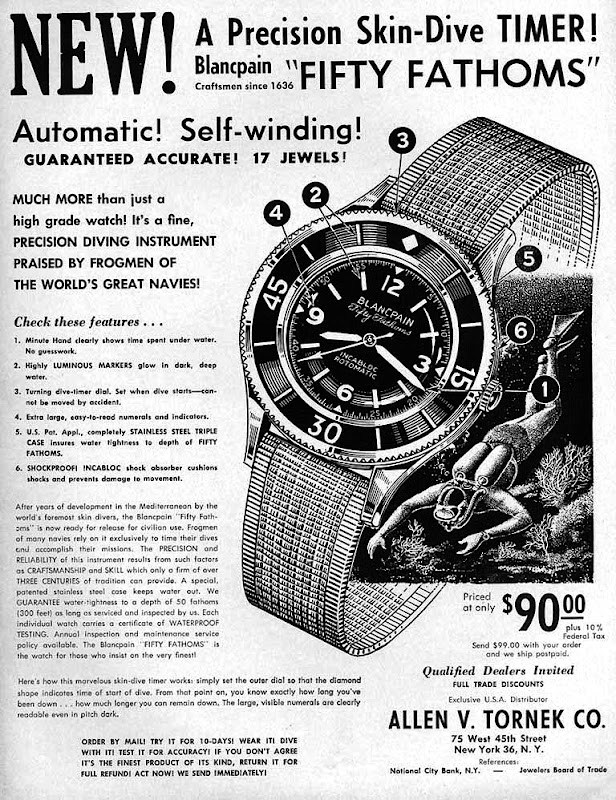
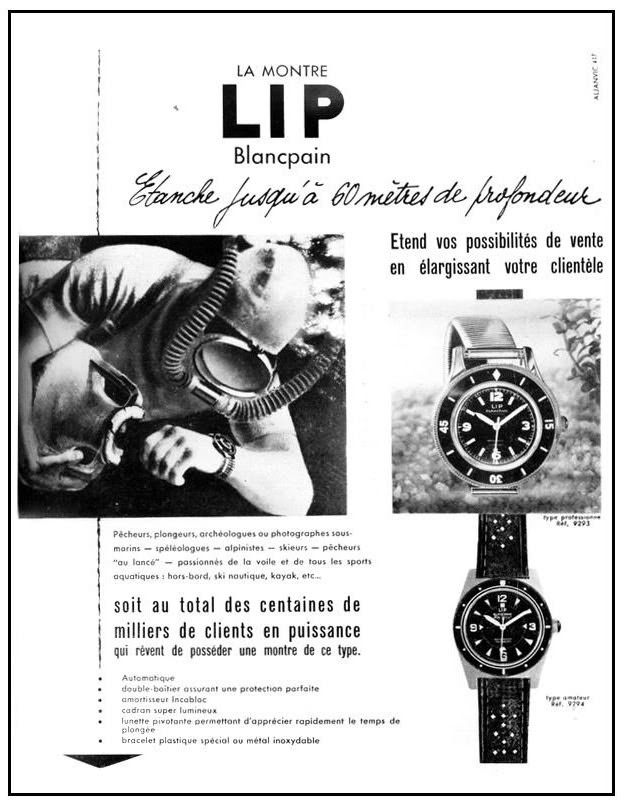
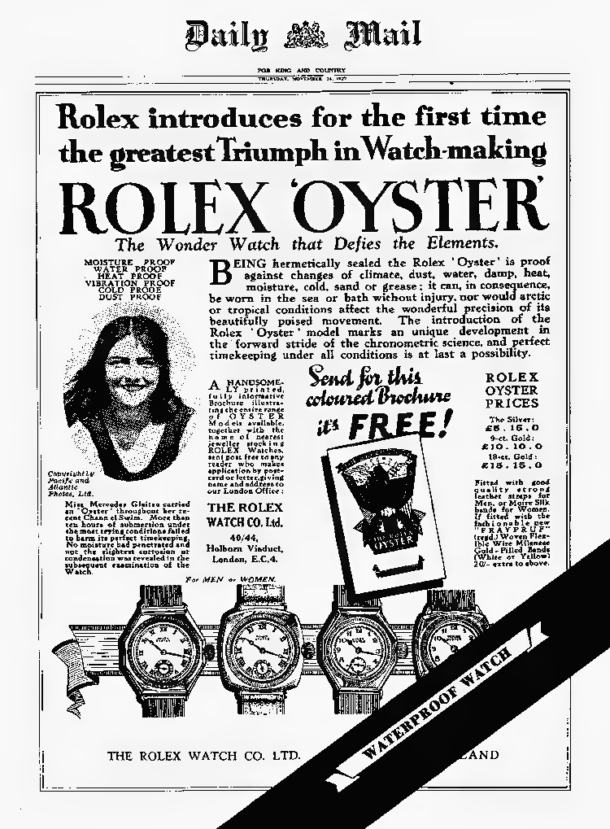
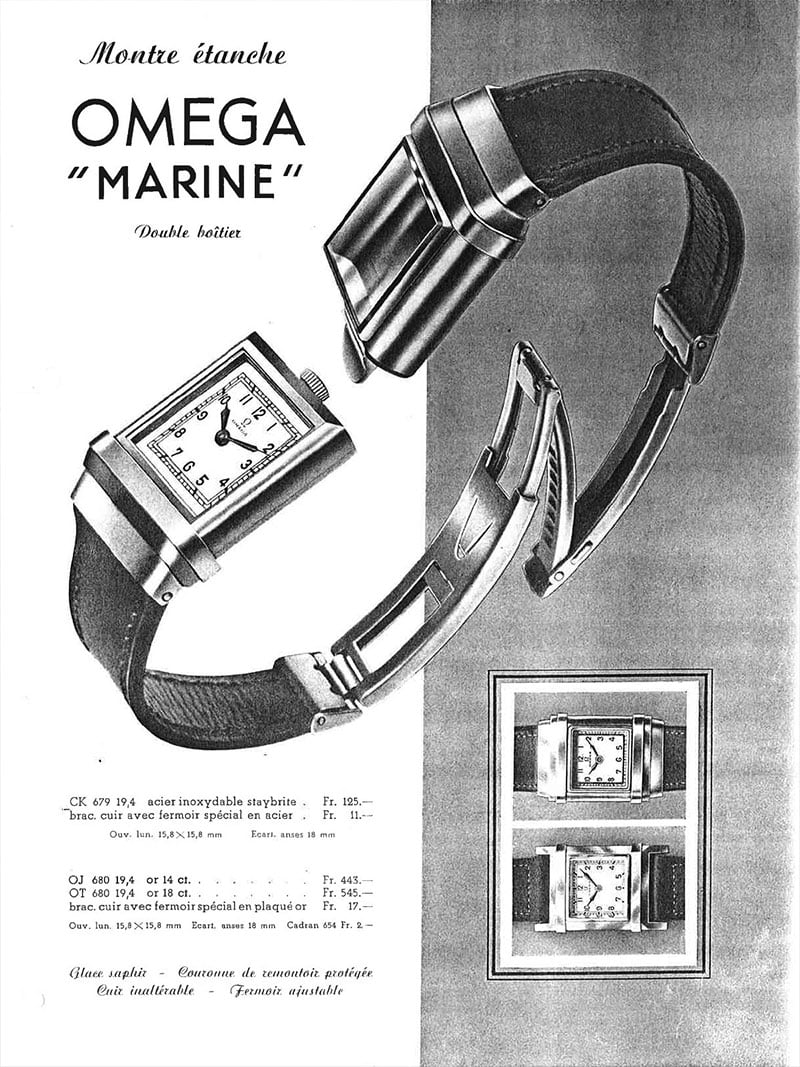
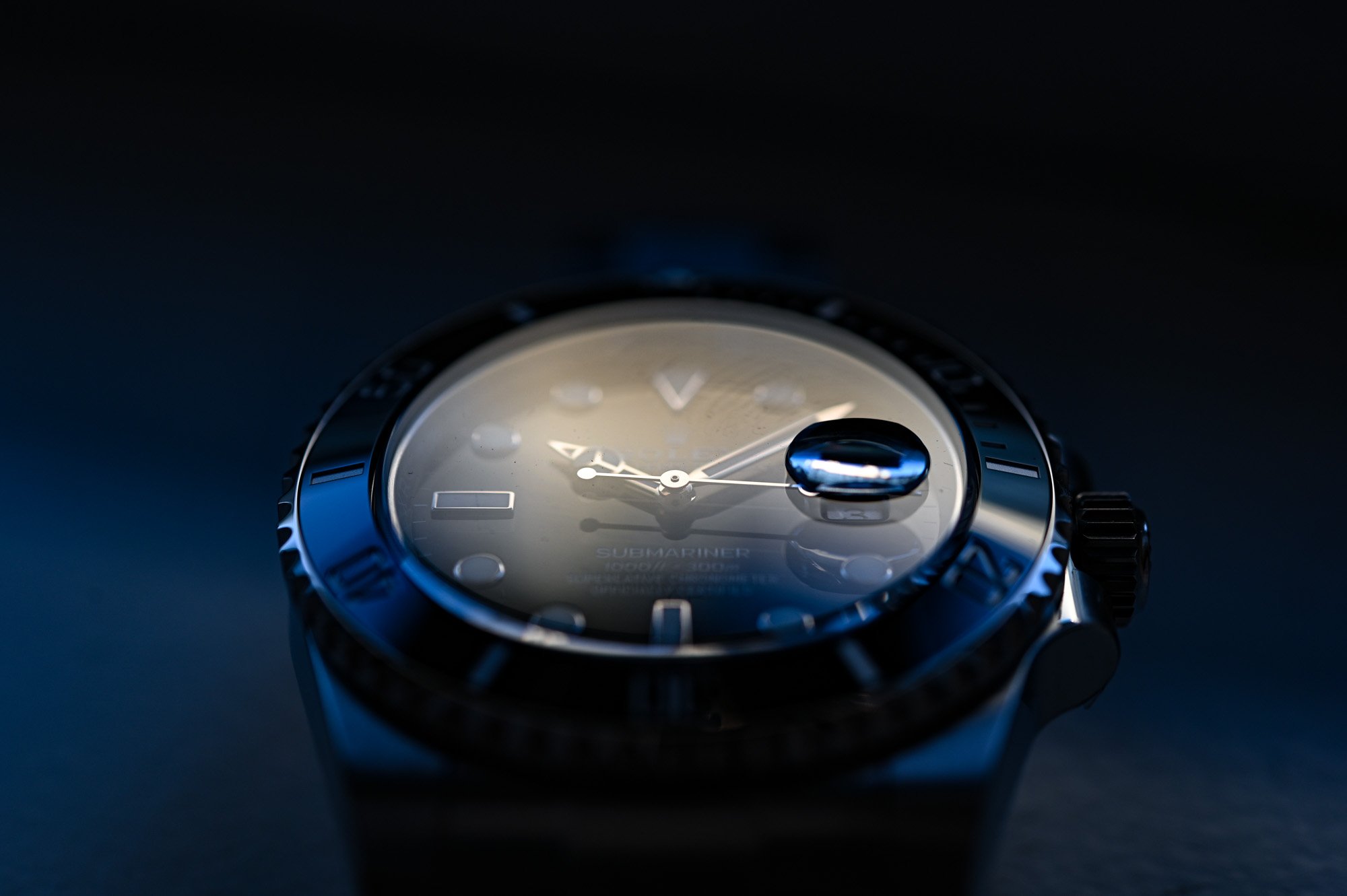
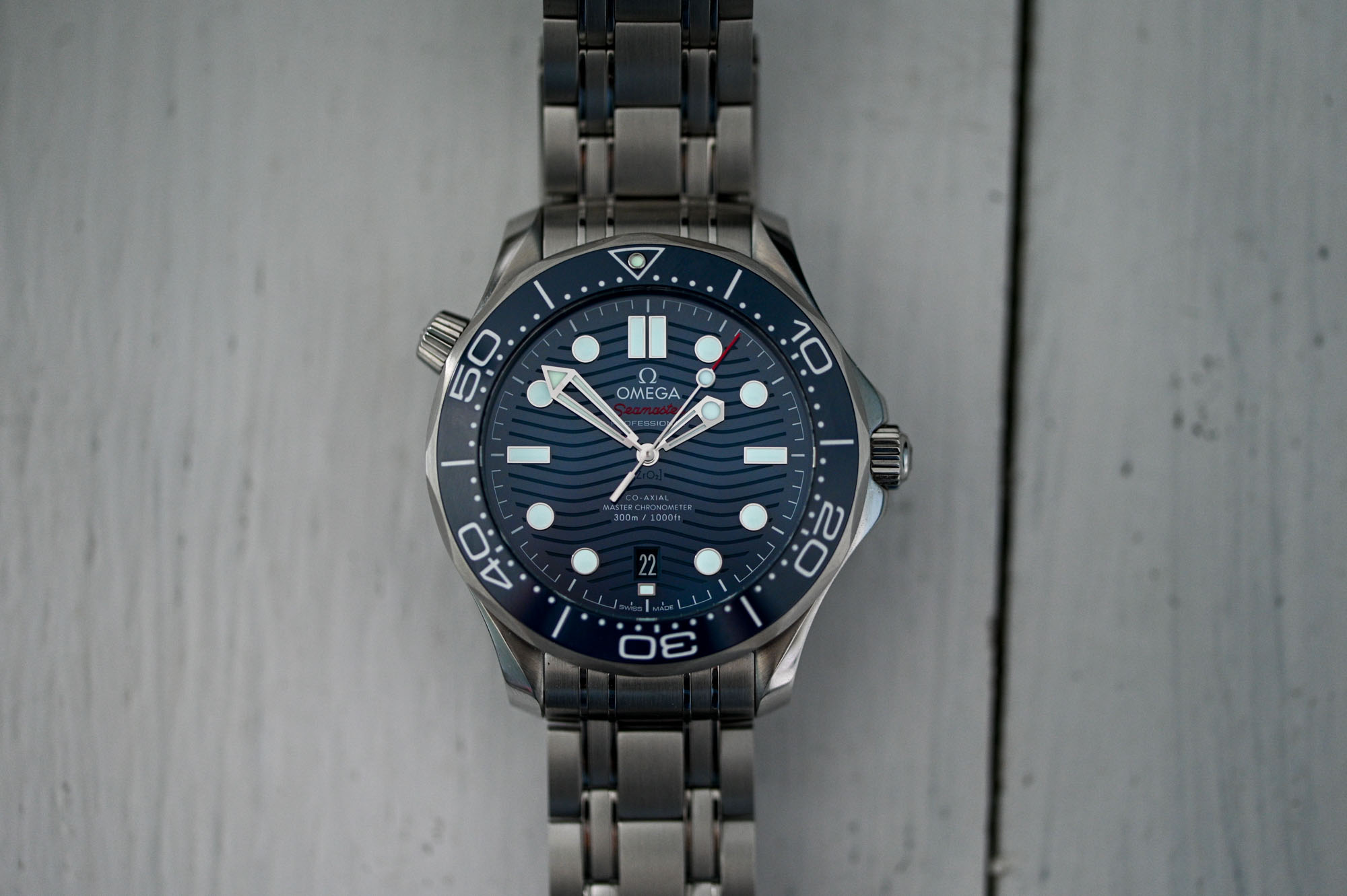
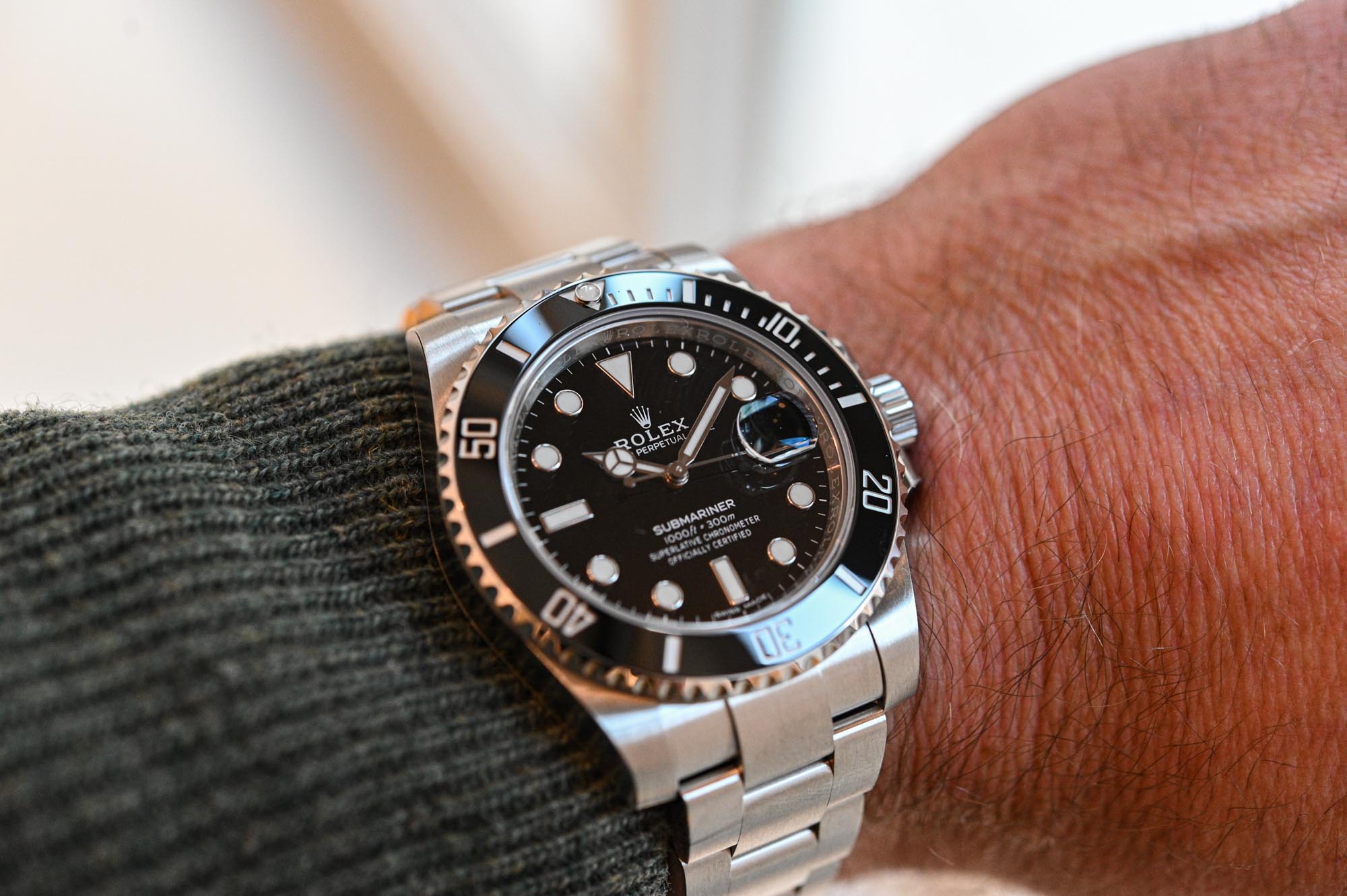
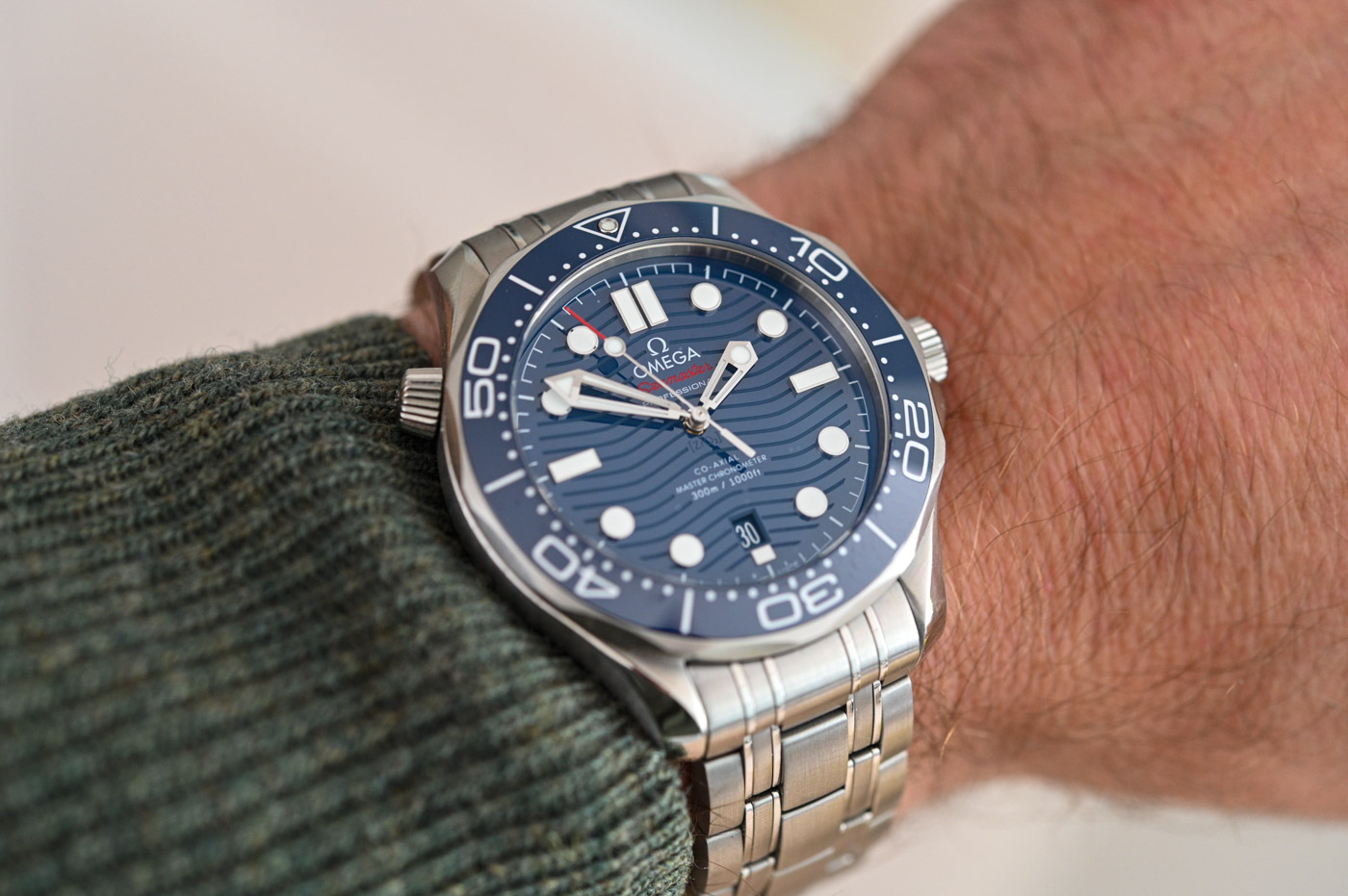

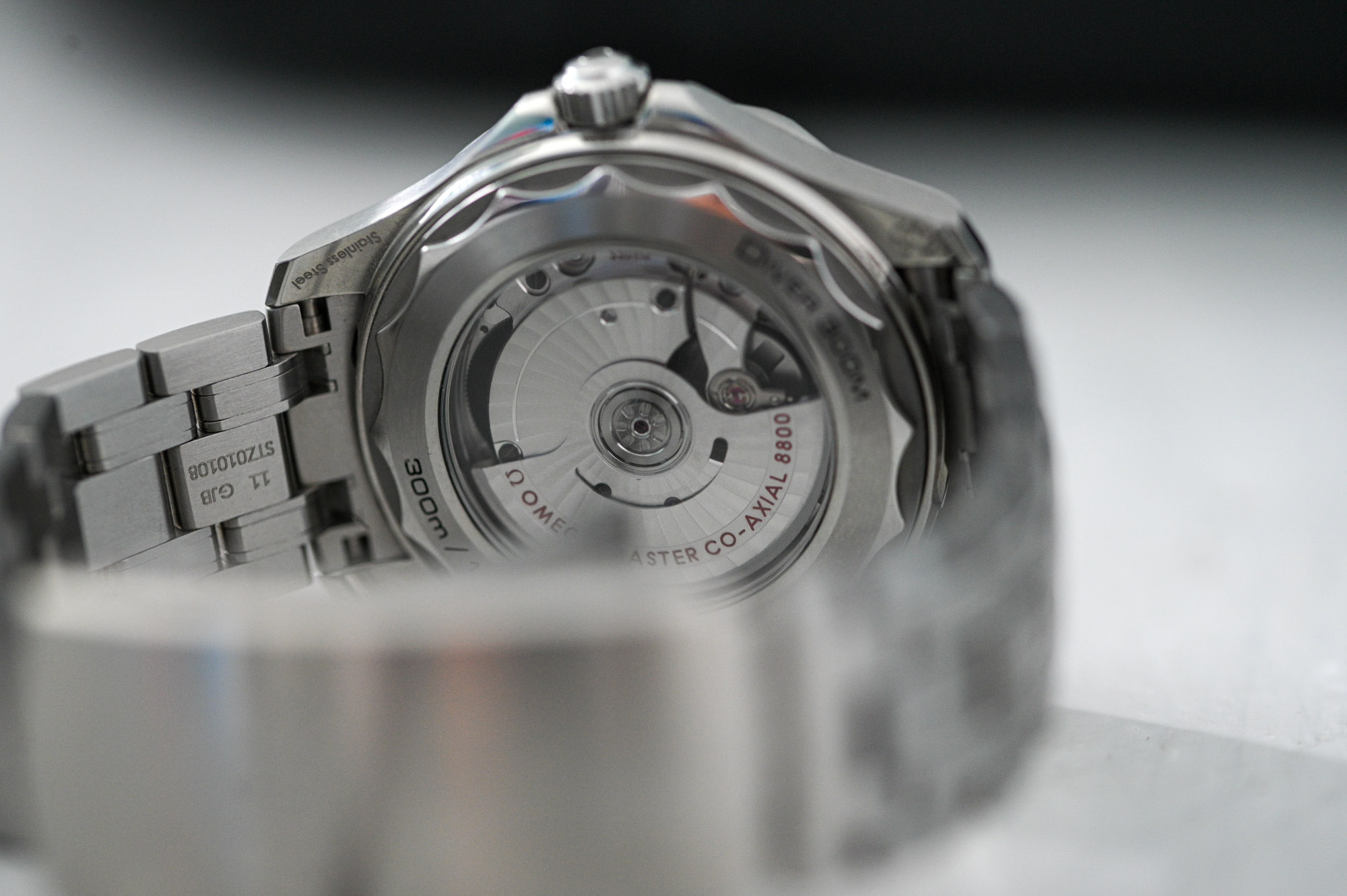

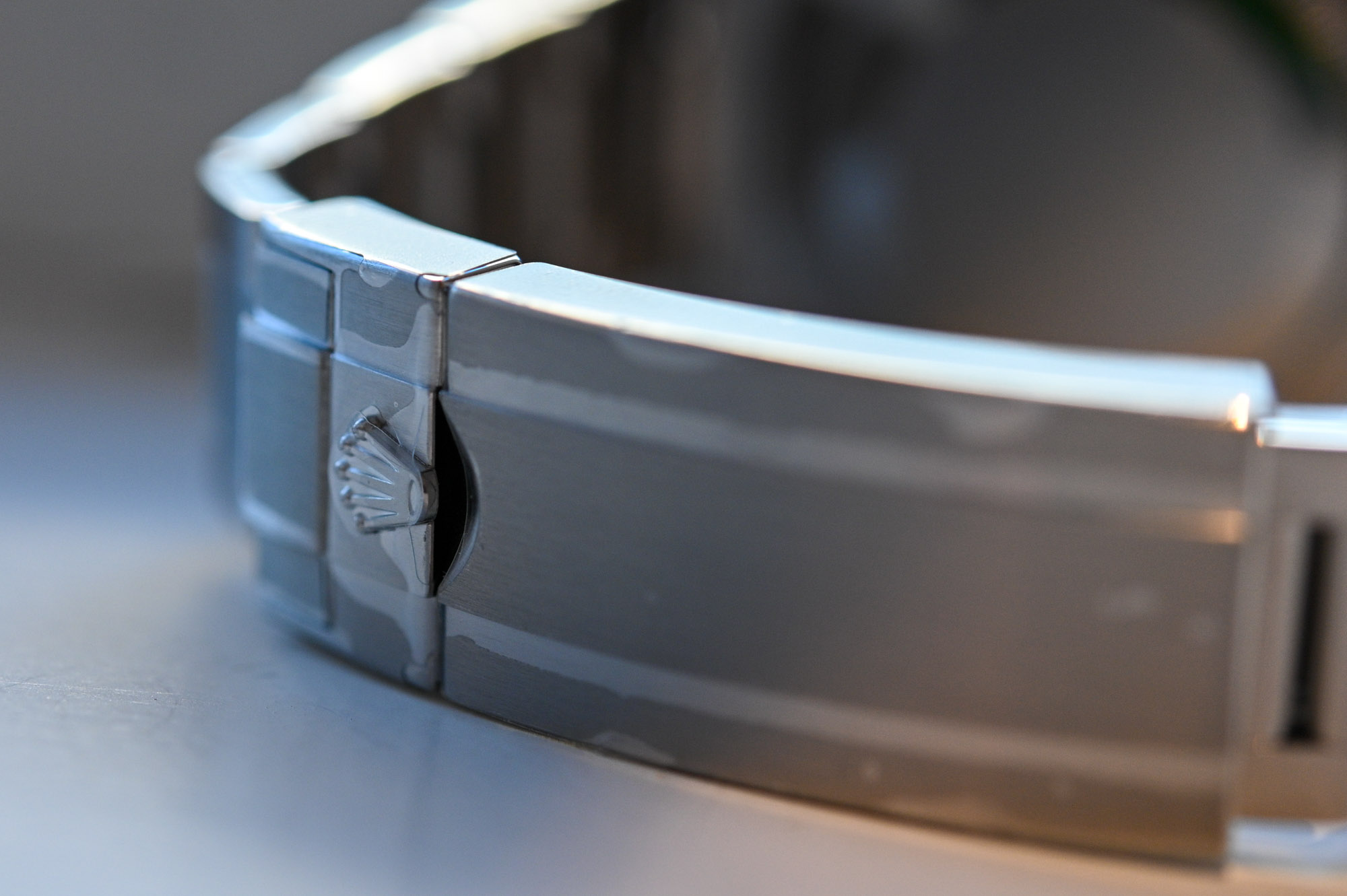
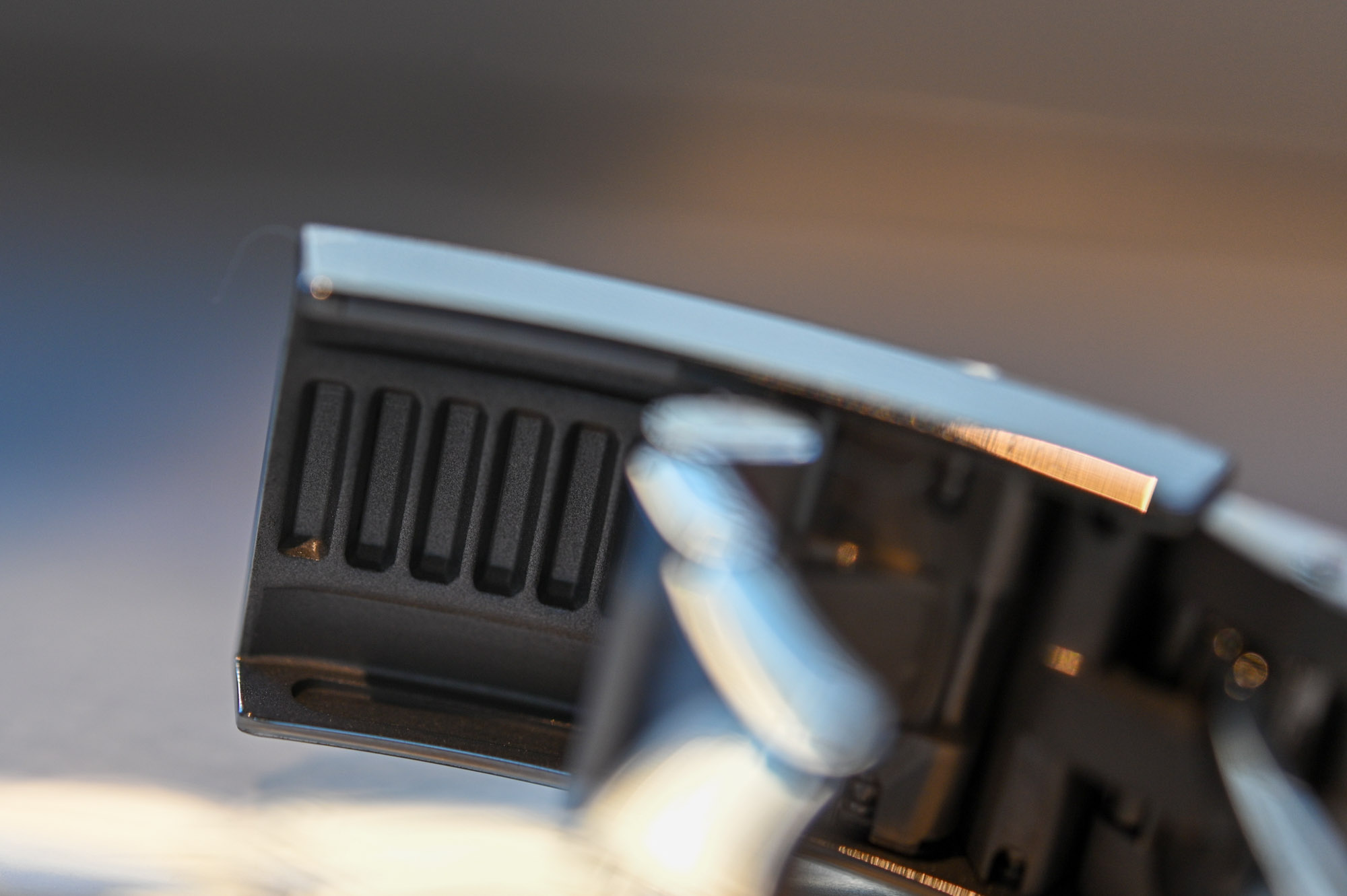
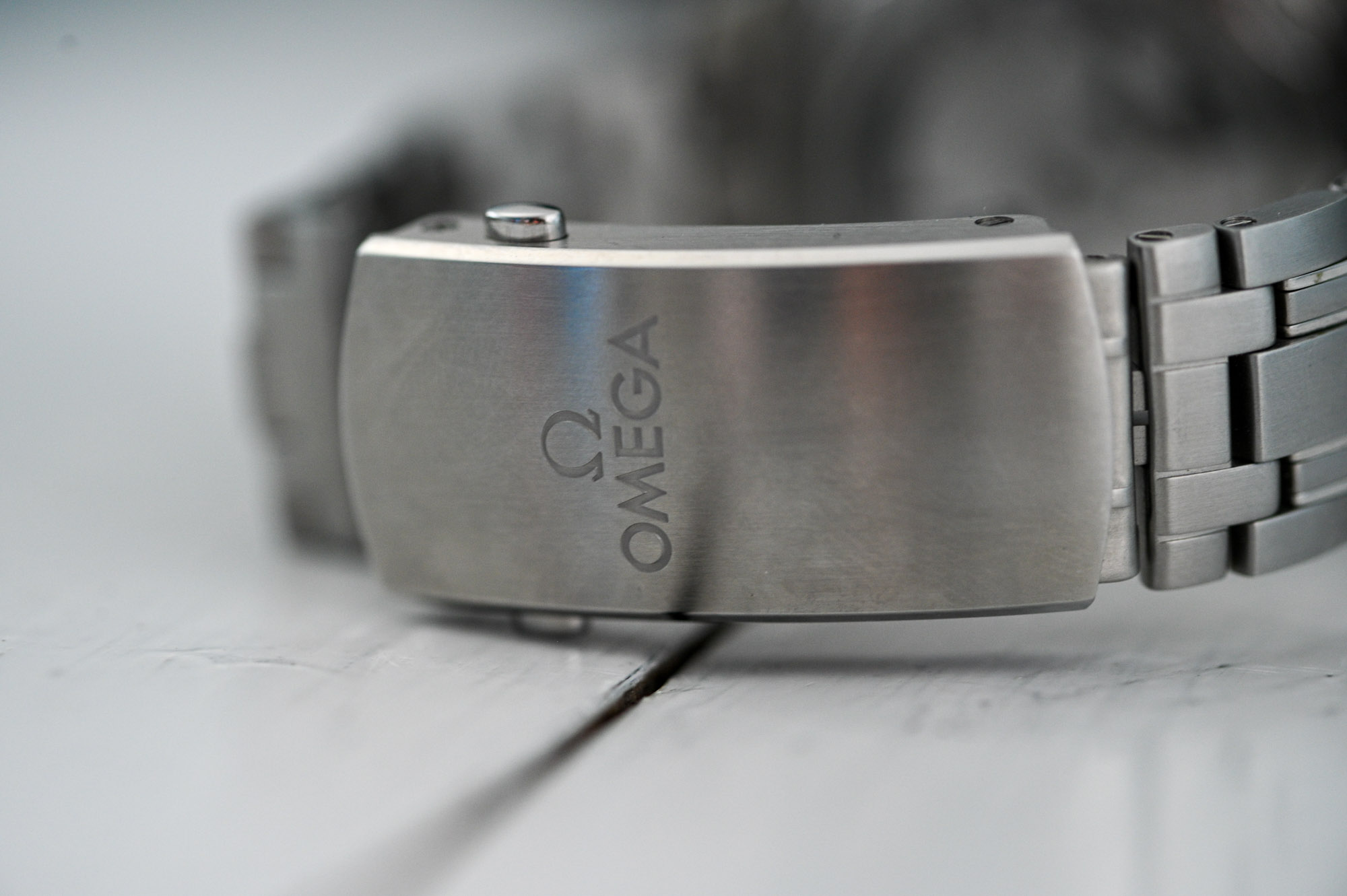
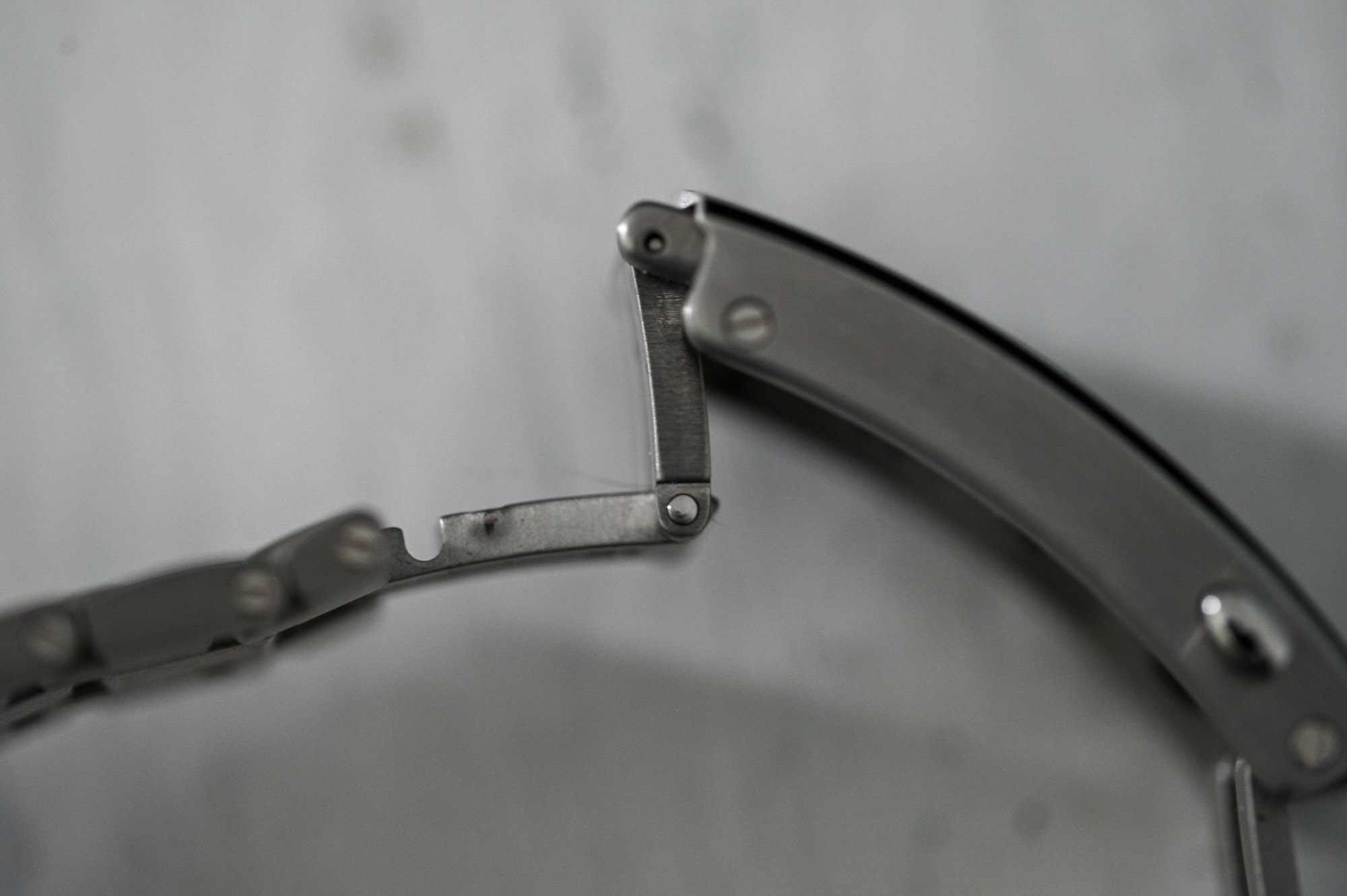
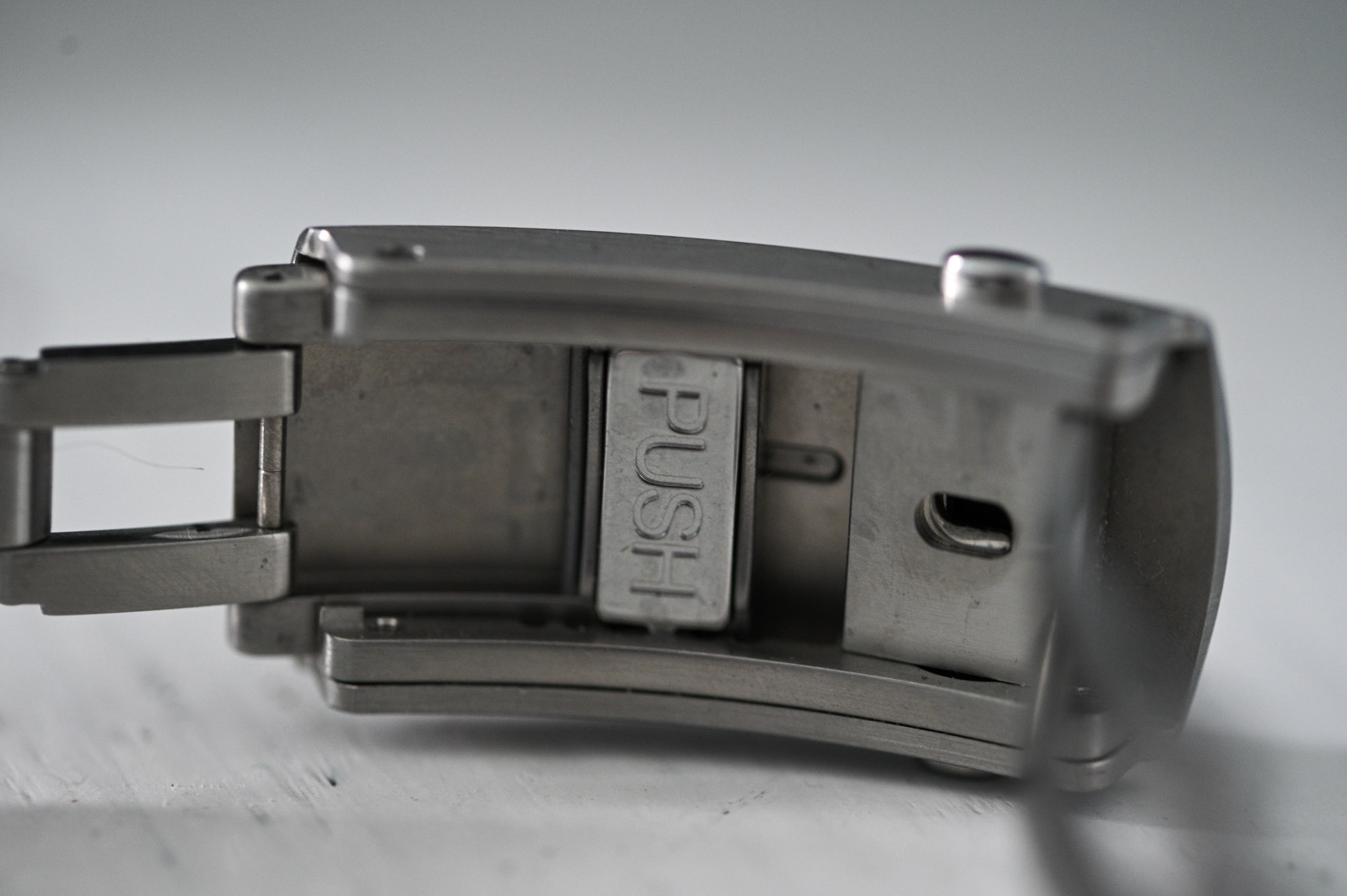
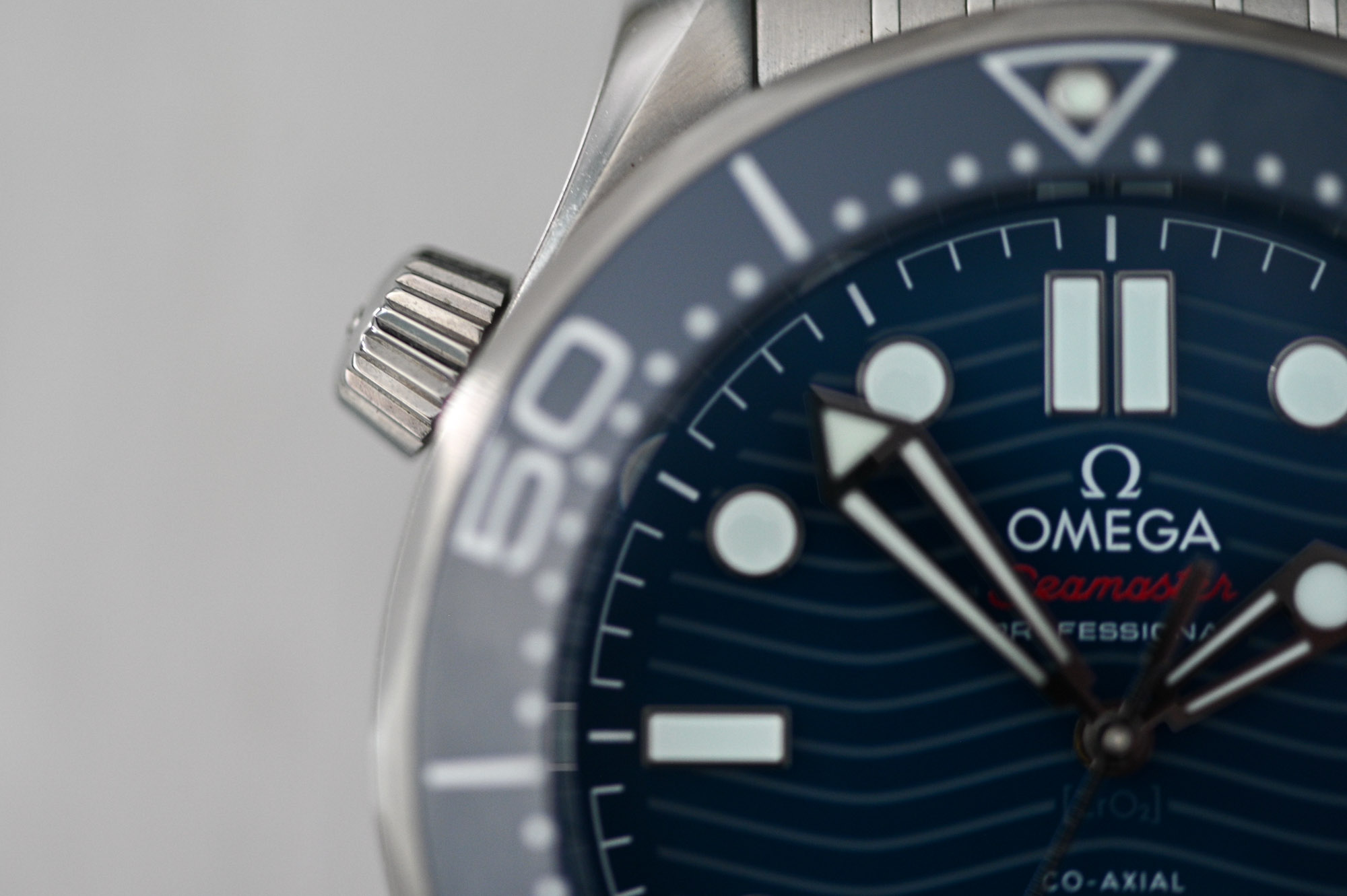
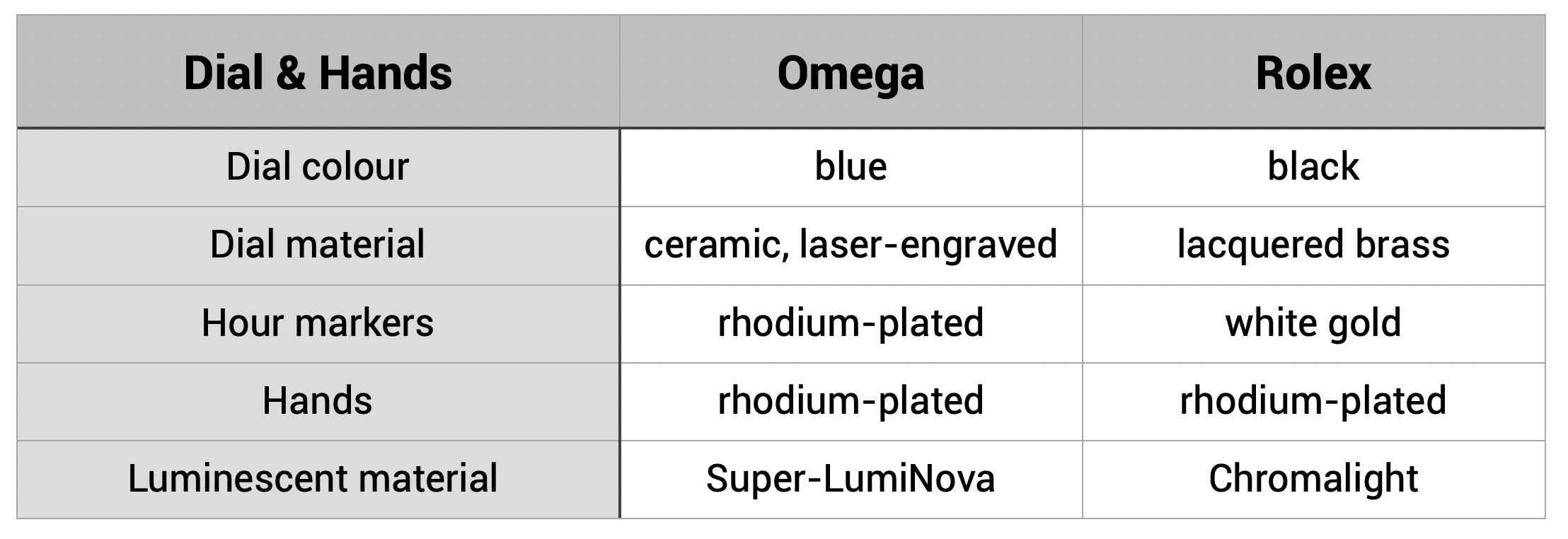
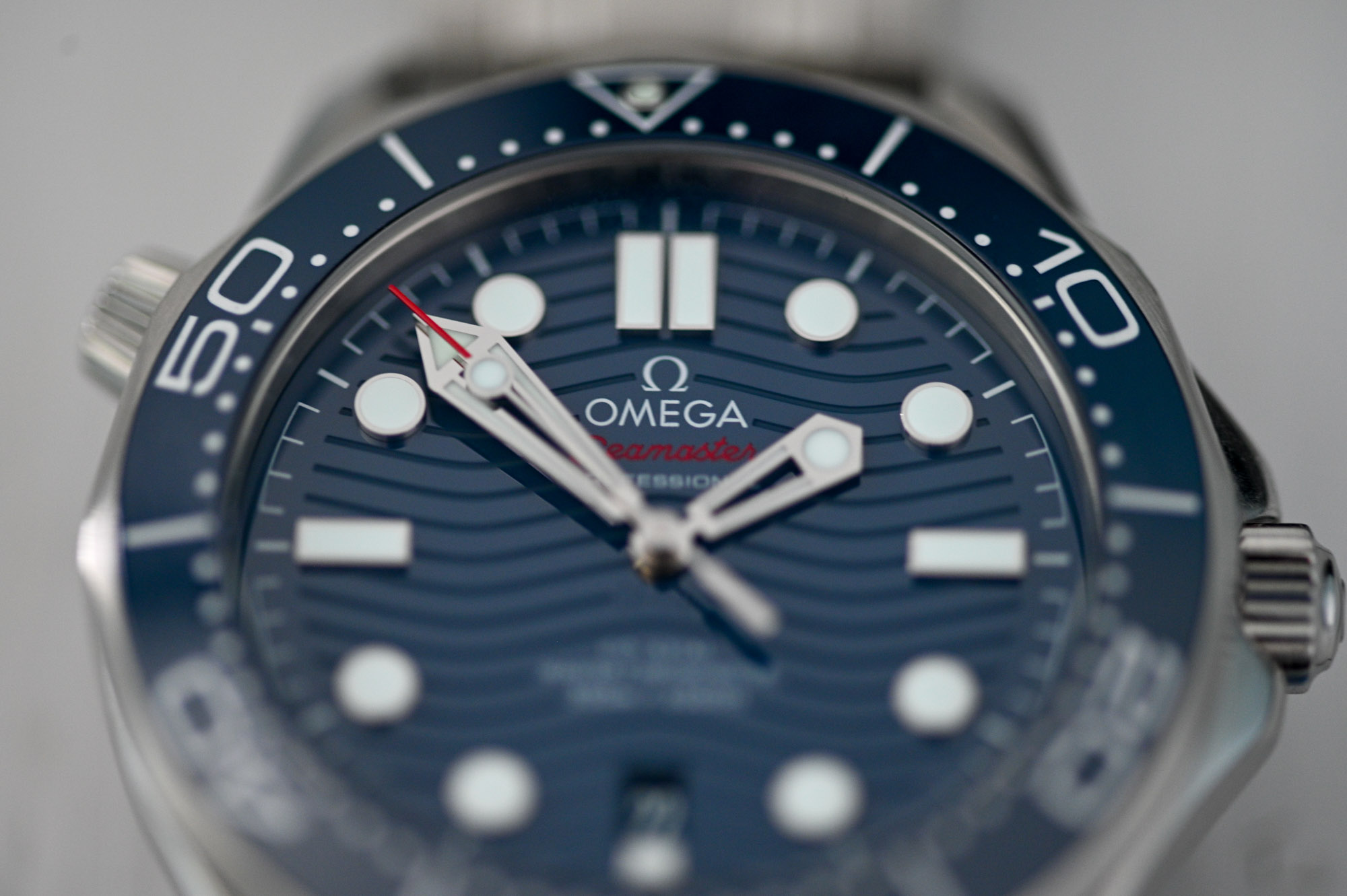

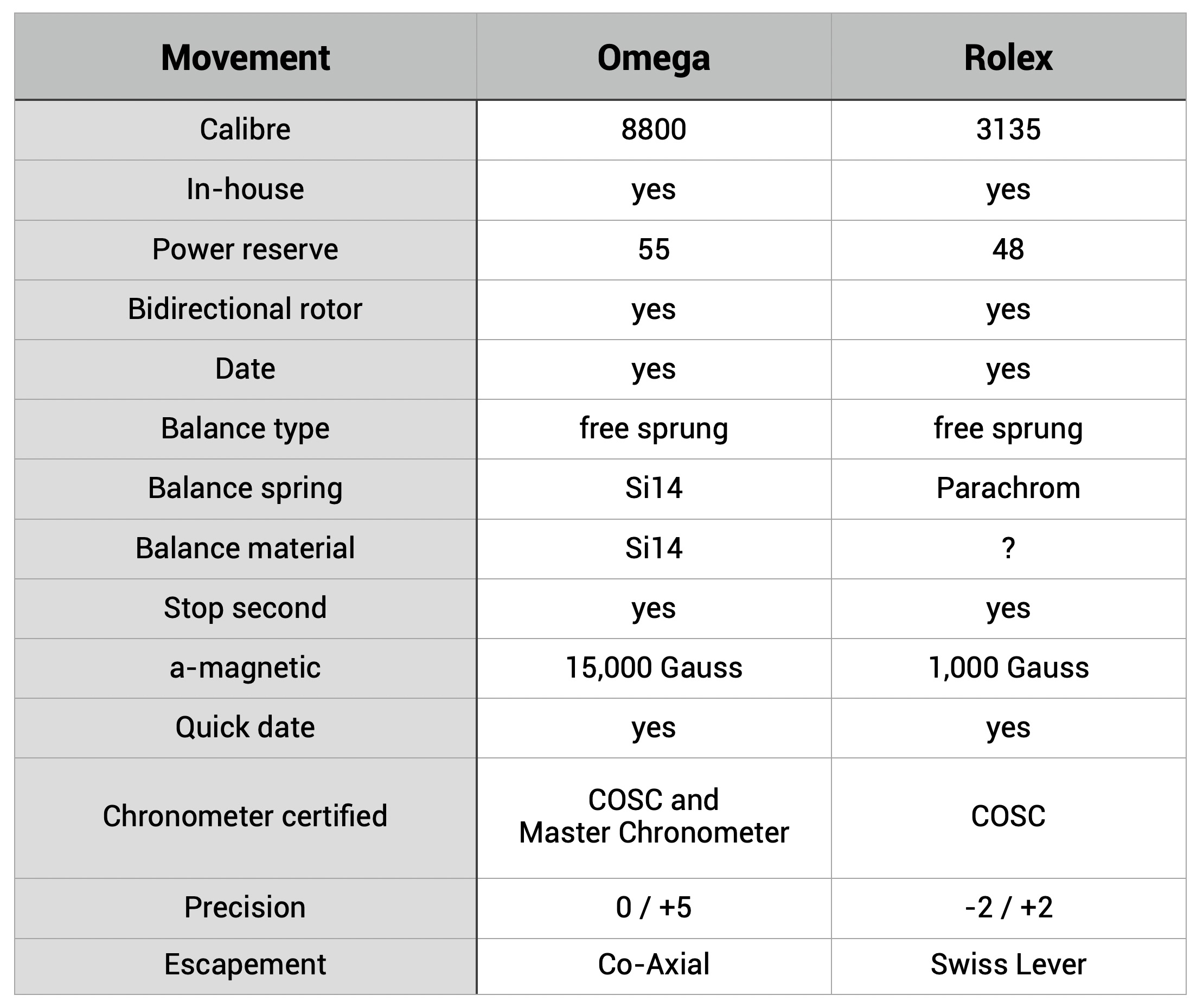
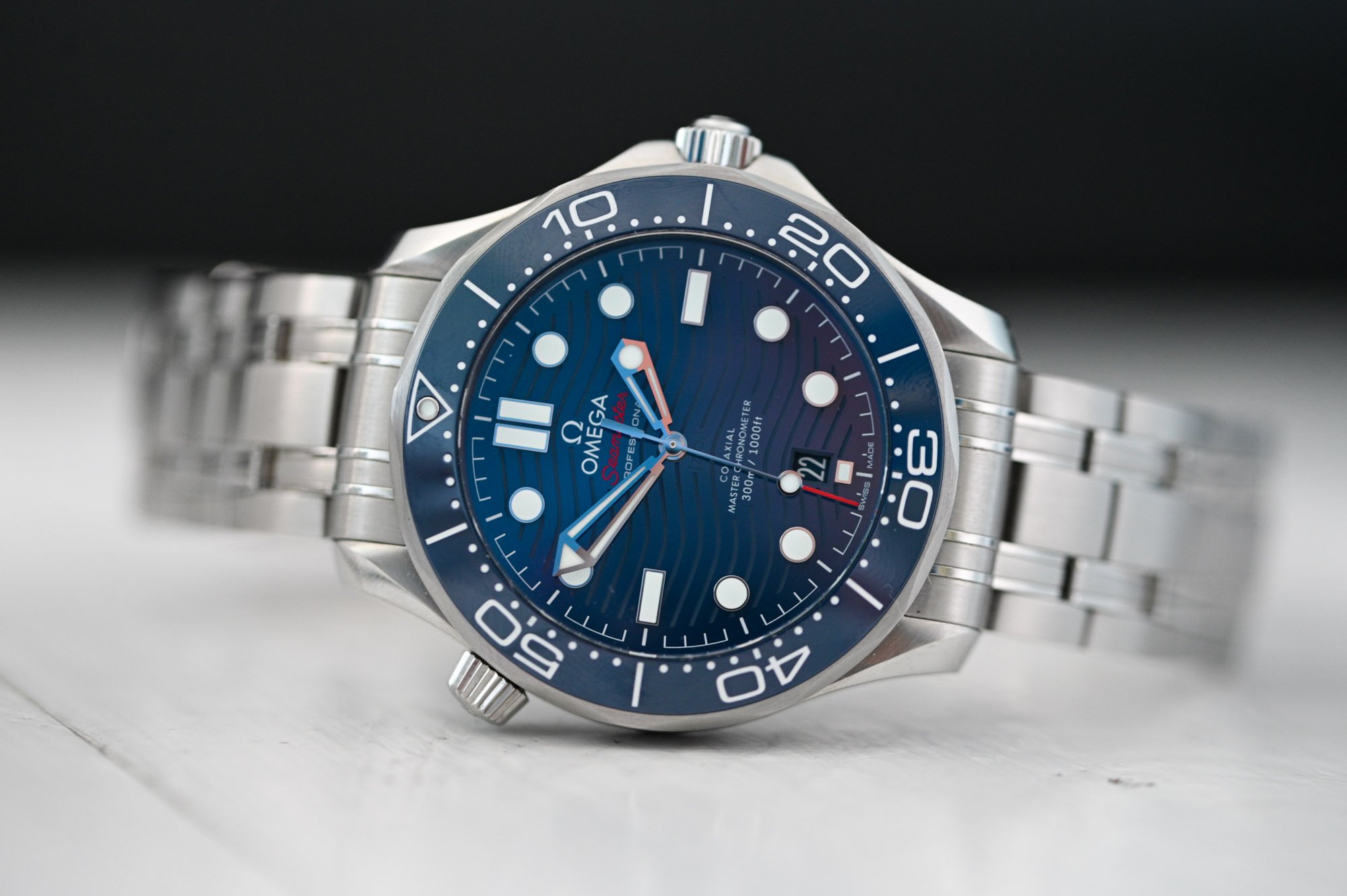
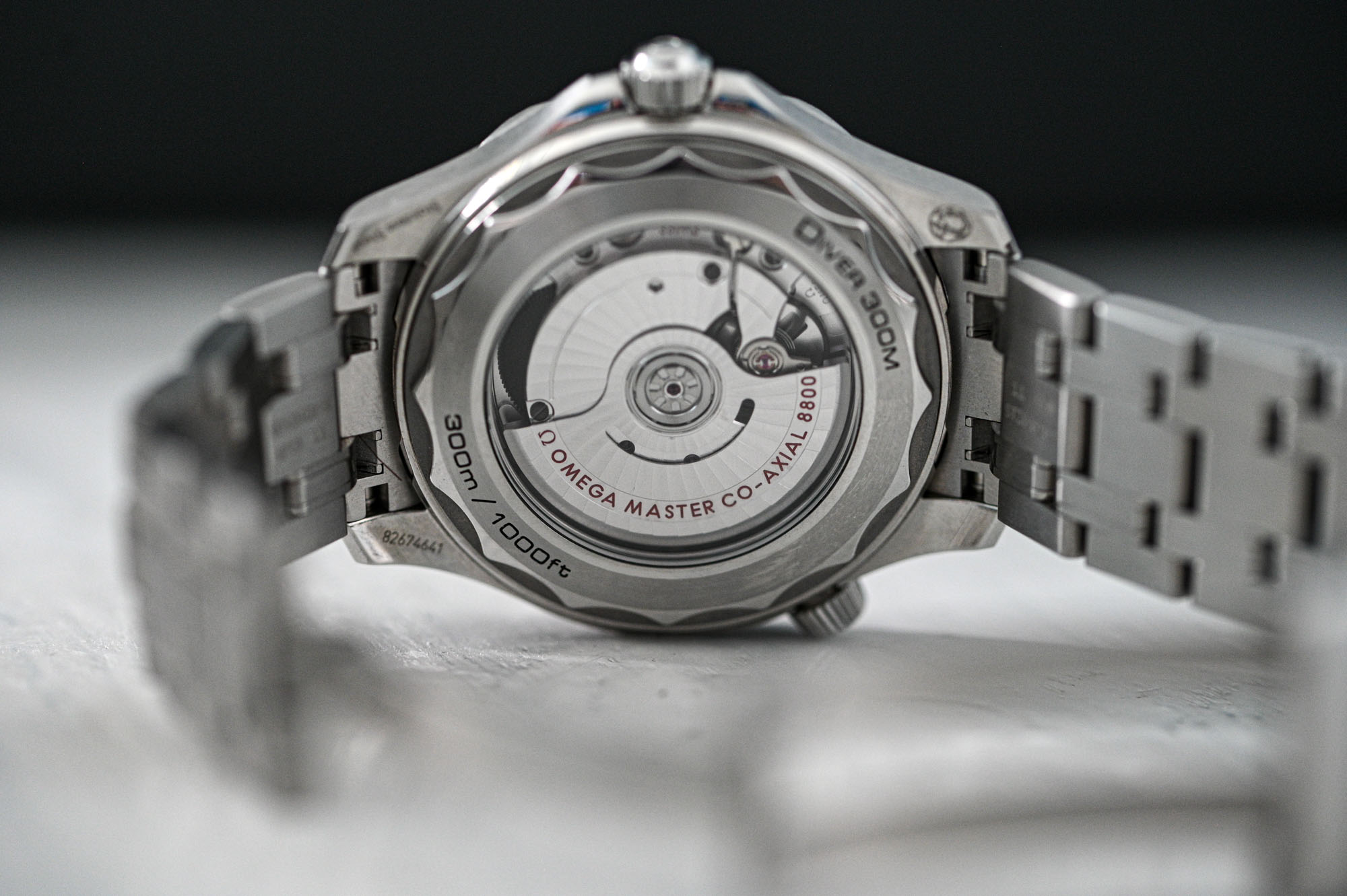
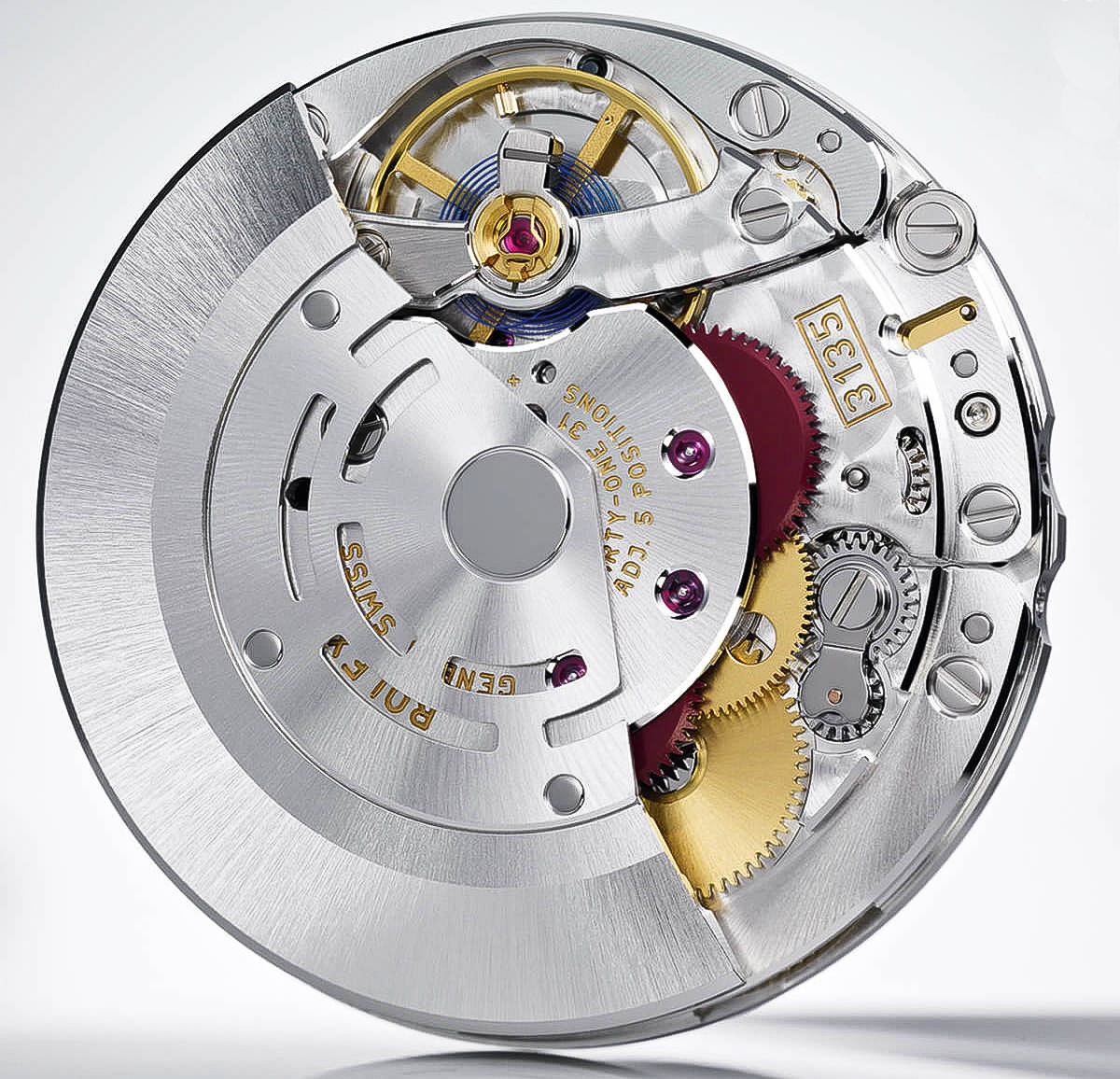

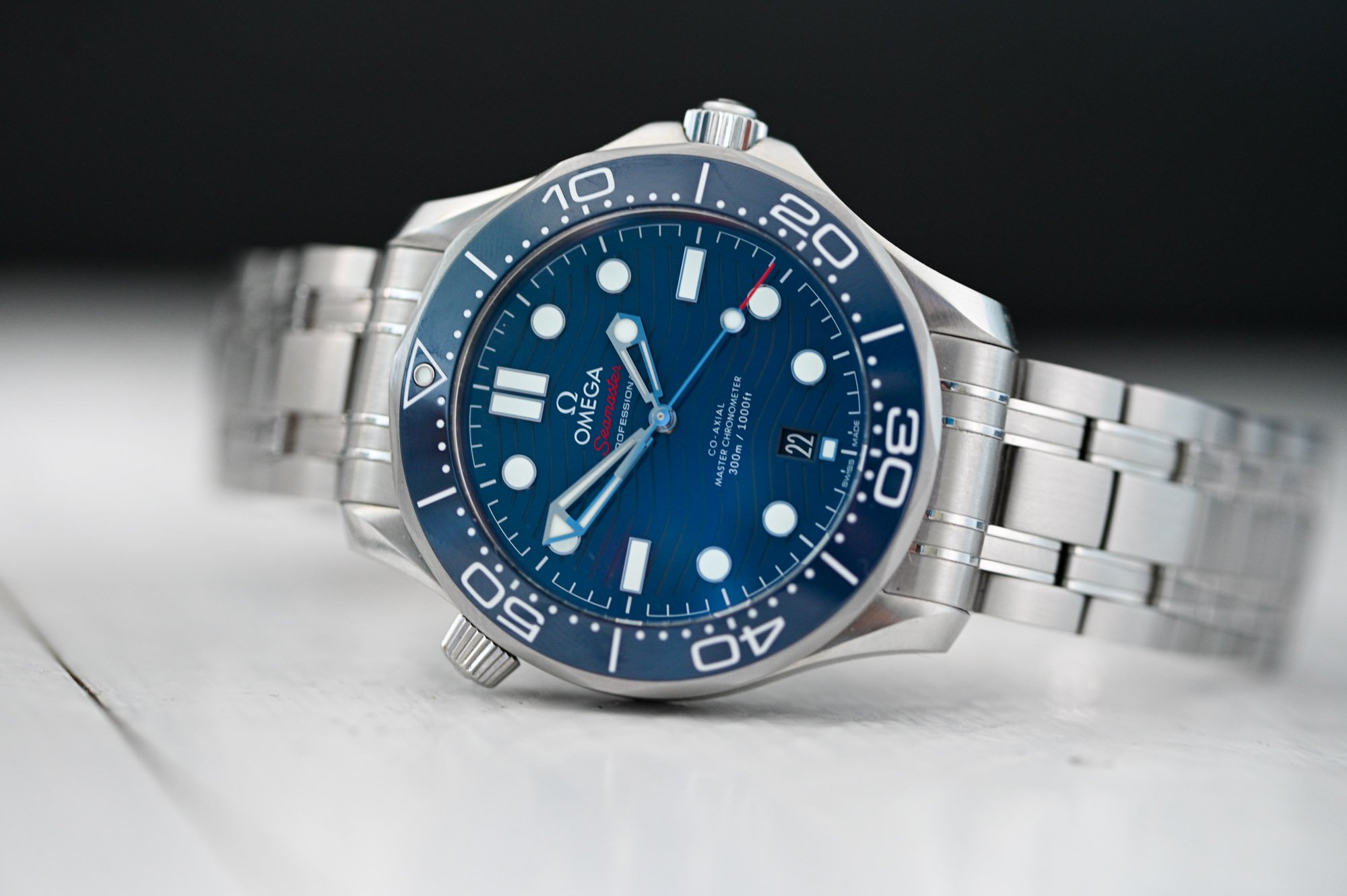
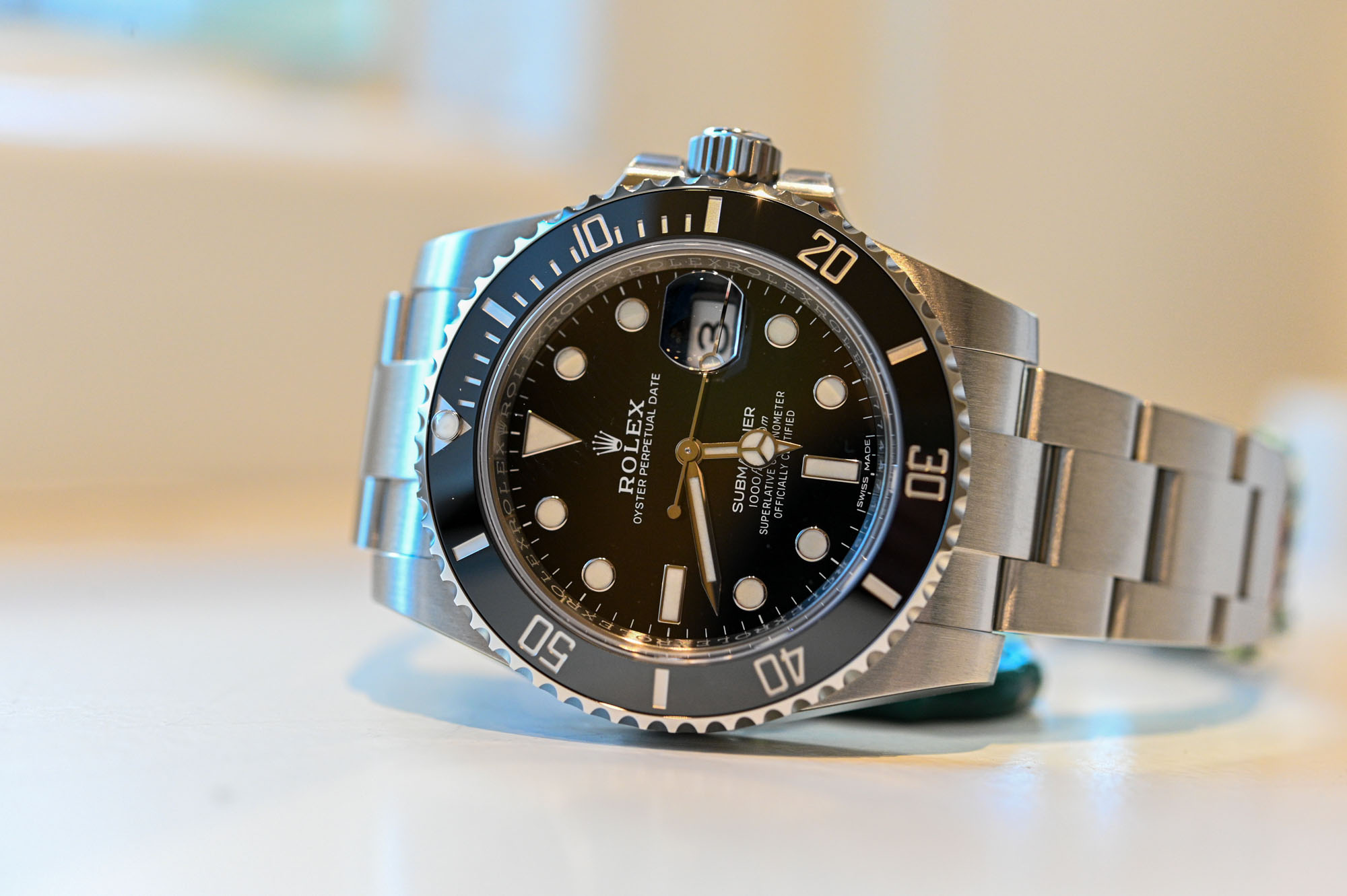
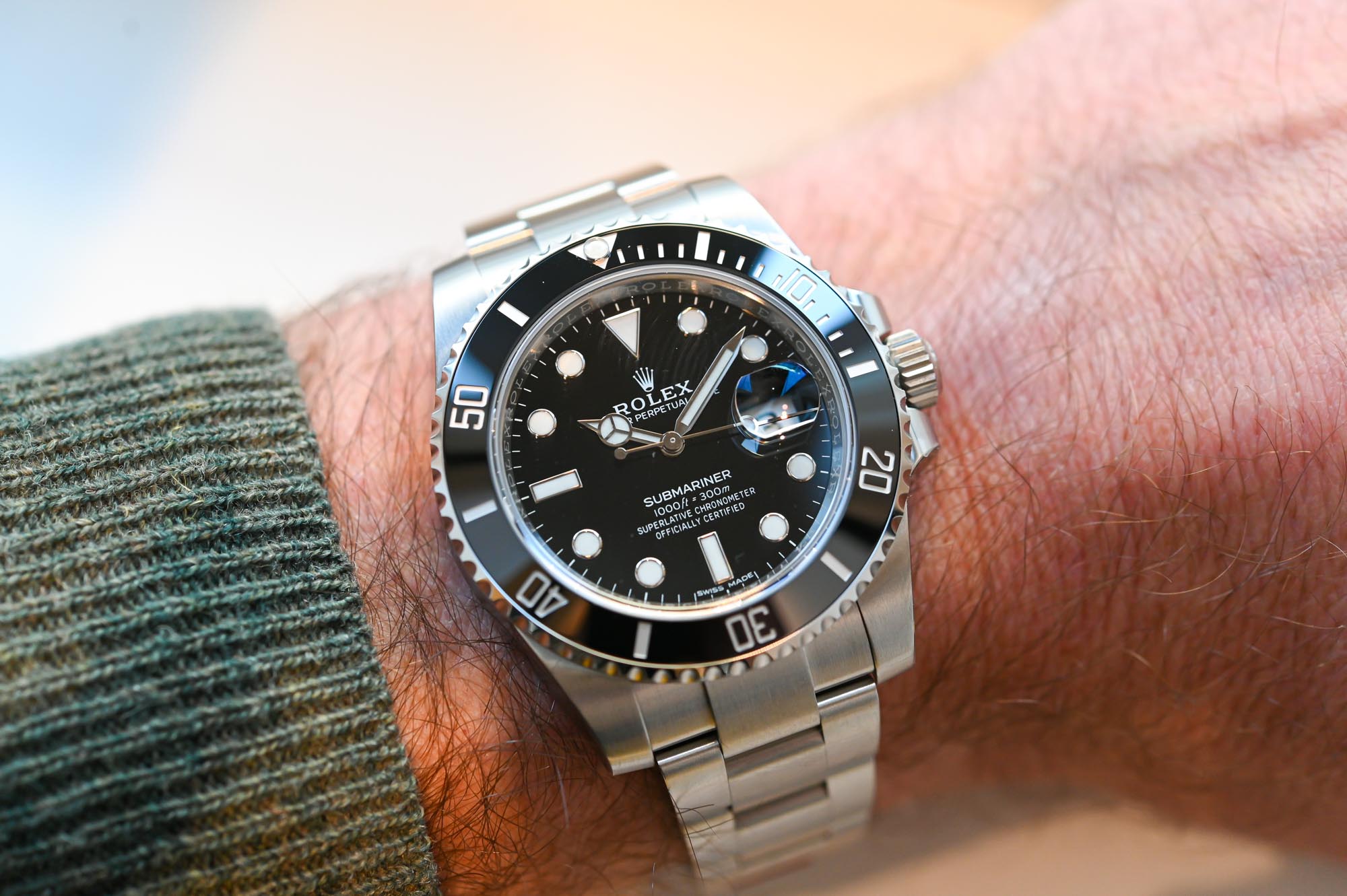
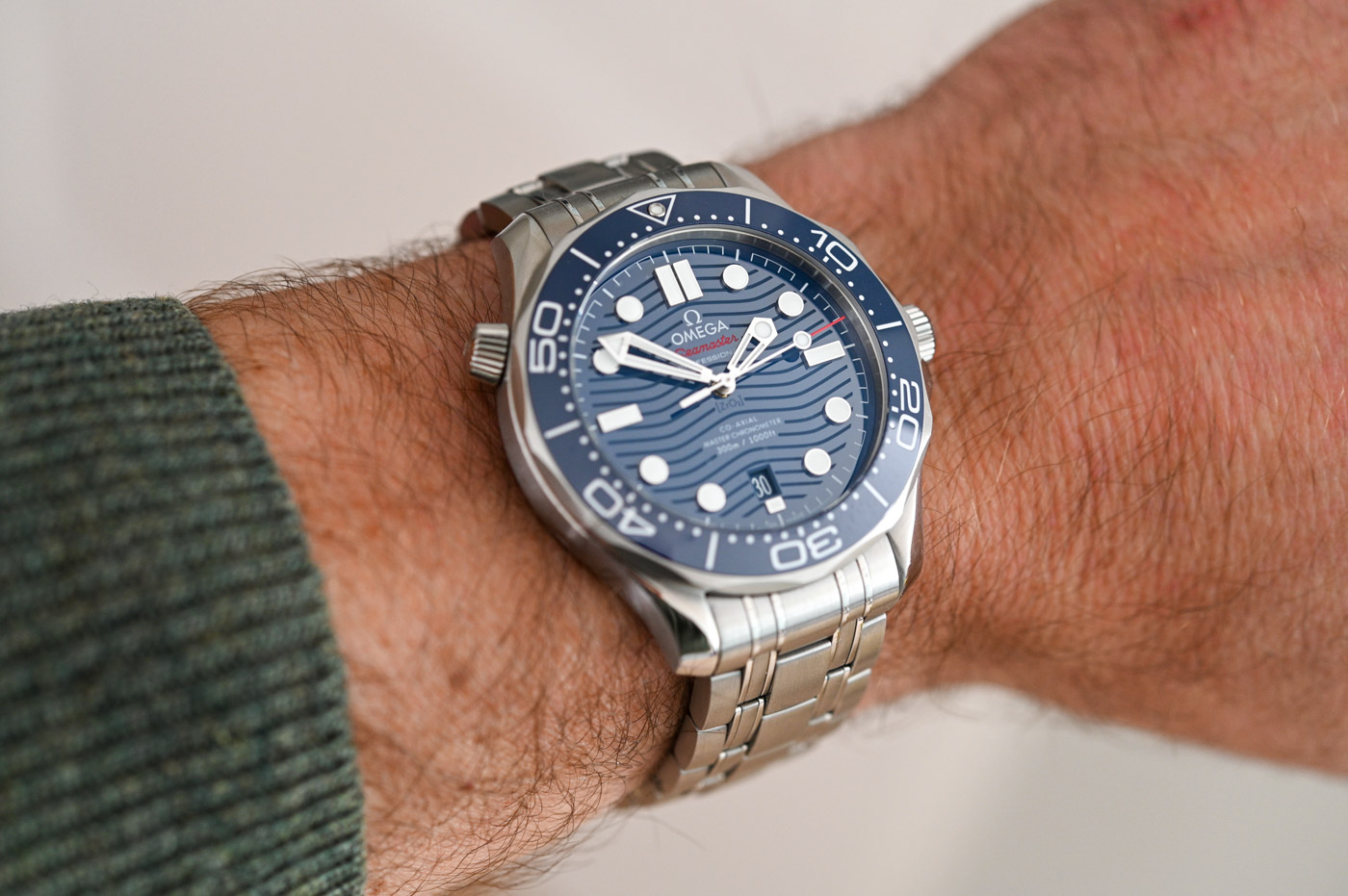





44 responses
The Sub no-date is the one to get, and worth waiting for.
The Zodiac Sea Wolf was announced at the Basel Fair together with the Fifty Fathoms from Blancpain in 1953. Both are credited with being the first commercially available diver’s watch. Rolex, as usual, scrambled to create an answer to the strong interest and reception to the competition and came out with their Submariner the next year at Basel Fair. And, as usual, through enormous effort and expense on advertising managed to convince people that a different timeline existed, though anybody can look up the facts and also see that Blancpain held the patent on the unidirectional bezel and not Rolex — because the Submariner was created AFTER the Fifty Fathoms.
Really enjoyed the read. This battle has been going on for a while and I think the omega edges it out like the author. People love the iconic looks and history of the submariner and it’s tough to change someone’s mind when set on obtaining one. I purchased a similar Seamaster when it first released but I’m looking at selling it because it just doesn’t make me feel the butterflies that it used to. I live in DC and submariners are on a lot of wrists. I’ll go with something different!
So the Omega SMD 300 has:a better case&bracelet; a better movement; a better dial&hands (The coronet on a simple black lacquer dial is not a draw with the laser-engraved ceramic SMD dial); is available at an AD; is available at a discount from the AD; and is half the price of the unobtainable Sub on the grey market. It is a better watch unequivocally.
Yet we still have this apology of something like ‘the heart wants what the heart wants’. I guess the ‘iconic’ nature of the Sub is worth as much or more than the watch itself.
I don’t mean that to be rude. The Sub is a fine watch. But Rolex get away with substituting hype and marketing for value because people don’t just tell the truth, which is ‘Don’t buy Rolex, it’s overpriced.’. The Sub is a $5000 watch objectively, and maybe it could be obtained for that if the community would stop making excuses for the brand.
Came here to say that the wave dial of the SM300M looks nice, that I might get over the 42mm size and even the highly disturbing helium valve (!)… but there’s no way I could ever buy such a watch with a pair of PHANTOM HANDS like that.
I know it’s a matter of taste, but I’m betting a non-trivial number of prospective buyers are putt off buy these hands. Yeah, sure, Omega doesn’t care because obviously it must sell enough units to break-even. Still, a more conventional pair of hands could prolly give a boost to the sales.
“No additional functions have been added and the variations are only in the used material; there are versions in white gold, yellow gold, pink gold and a mix of steel and gold. That’s it.”
There are submariners made from pink gold?
And then you take on your hands a Planet Ocean….
Franco,
This is a battle for the ages. (As you know) I have a thing for Seamasters, going back a few decades. But there is always something very, very exciting about that damned Sub. And whoever it was above that pointed out that the no-date is the best model is right. The symmetry of the no-date models always takes top honors from me. (The current Seamaster manages symmetry WITH a date… but it was never an issue with the older models. IMHO.)
… next up a battle Royale between the Sub, the Seamaster, and the Fifty Fathoms…
A thumbs-up to you, Mario!
The problem with the Fifty Fathoms (for me) is Blancpain’s release strategy, that they’ve been on record confirming as intentional – the less monstrous models are always their limited editions. The long-gone Hodinkee Bathyscaphe trumps anything currently available. Very frustrating
The price difference only becomes more stark once you factor in the minimum 20% you’ll get on the Omega.
1000 Gauss for the Submariner? The industrial standard, ISO 764 or its equivalent DIN 8309, is 4800 A/m or 60 Gauss.
Une fois de plus, la ZODIAC Seawolf passe à la trappe dans l’histoire de la première montre de plongée (1953).
Pas assez “glamour “. Dans l’inconscient collectif, ça doit être forcément la ” SUBMARINER “. C’est la plus connue, la plus icônique, la plus copiée, la plus chère, la plus spéculative, mais factuellement, elle ne pourra jamais être la première…faites l’effort de prendre en main une ZODIAC SEAWOLF en main, avec sa taille contenue, sa faible épaisseur, sa lunette bakélite bleue, Son cadran noir ptofond avec sa typographie si caractéristique et équilibré, son bracelet acier fifties, son histoire…vous verrez que c’est une montre qui mérite d’avoir sa place dans l’histoire horlogère et en particulier de l’histoire des montres de plongée.
Excuse me, but what did Panerai create besides the dial for the Radiomir? Nothing. It was all Rolex.
Rolex test 25% deeper than dial rated. Dial material makes no difference given we have Rolex from the 60s still…… Rolex remain far more desirable so hi-tech flashy material does not cut it at all. Tradition typical tool Rolex is my winner because at same 300m rates, it is thinner and does without a valve..
This is a great, objectively written article. I couldn’t agree more with Rob Ward’s comments. I own 6 Rolex, as well as a 2020 Omega Aqua Terra 41mm and 2020 Omega Planet Ocean 43.5mm. Without question, Omega makes a better watch, all the way around (now go ahead and burn me at the stake haha).
This article was far above the usual Submariner vs Seamaster comparisons. It accurately points out how Rolex is now on the catch up side of their historic rivalry.
Starving the supply line of new steel professional models can only mean a new Submariner is in the works and pricing will be accordingly higher once released. The gray and secondary markets currently support it.
In the meanwhile, it does Rolex a disservice to their management image. Perhaps they are counting on a new generation of buyers who will be unaware of their past indiscretions once the ADs are flooded with product again.
Worth mentioning: The Submariner bracelet tapers from 20 to 16mm. The Seamasters bracelet is 20/20mm.
In 1999 the Omega S as my first high end watch ever purchased when I just got my first job. The submariner was also available but the premium paid over the SMP simply was too much for me back then. Regretted it to some extend. Fast forward 20 years+ and I own 2 vintage subs and one seadweller. The SMP is already gone, it was simply joy my cup of tea.
@Cash… corrected!
The extra crown on the Omega pushes me away. Looks like some growth has occurred, an extra head so to speak. If you like it, great. Either watch is fine for its specified use but, if you want to get your money back in 20 years, you go with Rolex. I can go by the Omega right now, but not the Rolex. Thus, financially and 63 yrs old, I go with the Rolex.
A very biased review. Rolex use 904l steel far superior to any other steel watch brand including Omega. White gold used in Rolex ( hands) etc as it doesn’t tarnish Over time. Measuring Gauss in a divers watch !!
Take the opportunity to handle both watches, only one stands out.
don’t forget Rolex was a Bond watch also…I happen to own 25 year old Submariner as my everyday knock around watch and also have a 2 year old Omega planet ocean… the older Rolex gets way more comments…
I like them both, but if I could only keep one… Rolex hands down.
@Rob Ward
You are so right, hype our weighs facts by a ton in this market, even the blind could just smell it ! Good for you not pretending the emperor has on a thread.
@spqr
Thank you for the technical points ! So many are so lazy now, even when paid well ,they do at best 50% of their job.
@Carl… 904L steel not “far superior” to 316L steel. And the hands of the Submariner are made in steel that is rhodium plated. As for the anti-magnetic properties, have a look at the ISO standard for a dive watch.
Bond gets mentioned a lot . If you read the books, when mentioned the watch is a Rolex. They are both fine watches, just a matter of taste. This is all a bit like a game of top trumps, the only thing that would influence my decision if I was thinking about it logically is the co-axial escapenent, but I couldn’t live with that dial so the whole thing is subjective again. I suppose as the Submariner is the one all of the micro brands seem to copy its likely the most popular of the two.I have three “Divers” rated at 100m, 600m and 1000m, they can all handle the washing up. I know two drivers who both use a dive computer not a traditional watch. Interesting article though.
I mostly liked the review, but the diver’s watch synopsis is kind of incorrect. The first diver to appear was the Blancpain, and almost at the same time, the Zodiac Sea Wolf. I think a couple of people here already commented on that, together with the fact that Blancpain also got the patent for the clicked-bezel, also accurately commented by someone here. What I am not liking very much is the comment about the Silicon hairspring used by Omega. The reviewer says that its material is brittle, so there is some implied element of durability and less reliability because of this. Nothing far than that. The Silicon to which this person refers is from the late 80′, early 90’s, because the actual silicon used by Omega is quite hard and more resistant by to deformations, by far better than the parachrom. There are some international watchmakers who were able to go to a presentation by Omega in which they were able to stretch this material, and the Silicon not only did not break, but returned to the original shape, and then that same silicon hairspring was tested for functionality, and was able to show a + 4s rate. Parachrom can not do that. For me, Omega is by far the better watch technically speaking. In terms of business acumen, it is Rolex. But Omega has proven itself everywhere, and the Seamaster is just one of the many accomplishments Omega has had through the years, quite more than anything Rolex has done. And getting the Co-Axial from Dr. Daniels, one of the best modern watchmakers in the world, was and is a good move by Omega.
The current Submariner is to tick, but the Seamaster is tacky.
I mean that any steel Submariner is classy, save maybe the last version, and can be worn with almost any attire but the Seamaster is kitch, dated and unwearable in almost any circumstances.
No comparison here.
Clearly, the Seamaster overall is the better watch. The Submariner has an impressive heritage as back in the day, Mr. Fleming originally had 007 don it as his timepiece.
But, Omega takes the cigar, however, I wouldn’t dive with either. My Seiko and titanium Citizen divers are better suited for the job.
I’ve owned many Seamasters since the early 1970’s though, admittedly, I have never owned a Submariner (THOUGH my brother has had one he bought in 1970 at a “ship’s store” while in the Navy). Owning Seamasters has been an overwhelmingly positive experience for me (the only negative being a $500 watch band replacement SO MY DEALER WOULD BE WILLING TO SERVICE IT (Omega won’t let their dealers service one that isn’t 100% Omega) unfortunately for my brother owning a Submariner has been mostly a downer as he has had it in for service more often than he has had it on his wrist! While he paid only around $400 for it in 1970 he has spent several thousand keeping it running.
@Jorge… I have expressed my worries about the use of silicon to Omega, so next time I’m visiting them I will definitely ask for this. Thanks for bringing this to my attention, appreciated!
I used to have a Sub 114060. I sold it to fund a Deepsea JC edition. I also have a 2018 Seamaster 300M. I think the 300M is a fantastic watch and technically superior. Would I trade a Submariner for one? Absolutely not. The Sub looks more elegant and classic. Besides the 300M can be found for less thank 4K preowned or in the grey market. It is quite affordable. They can coexist in any collection.
So I own the Seamaster as well as the 114060 No Date Sub. I am a fan of Omega and what they’ve done. They do make great movements, and have a solid heritage.
However, the one thing you didn’t mention was how these watches feel in person. The bezel on the Rolex is sharp and turns easily even with wet fingers or gloves. The bezel on the Seamaster is hard to turn even with dry fingers, since the scallops are shallow and smooth. The crown on the Rolex is equally sharp, and easy to manipulate. The crown on the Seamaster has duller edges, and requires some effort to unscrew it, and make adjustments. The bezel markings on the Seamaster are fine, but are not perfect as they are on the Rolex. In fact, the Rolex uses platinum to fill the indices, not enamel. All in the the fit and finish on the Rolex is perfect. The Seamaster is very good, but not the same as the Rolex.
I feel that the Sub is the best made, and best finished tool watch on the planet. Their design choices reinforce that belief. The Seamaster is a very capable tool watch, but it’s designers know almost no one will actually use a Seamaster as a dive watch, and have chosen appearances over pure functionality.
There are obviously watches that a more interesting, and finished much better than a Rolex. However, that’s not what Rolex was shooting for. They are essentially the Porsche of the watch world. They have one design, that is iconic, and nearly perfect, and have chosen to refine it slowly, instead of designing toward market demands.
For $5,000 the Omega is a great value when compared to other watches in the same range. I do think some watches are finished better at that price, but none of the equivalent of the co-axial movement.
In closing, the best analogy on these two watches comes down to the speed of a car. It’s easy to make a car do 100mph. However, increasing the speed gets exponentially harder. So the time and money it takes to go from 200 to 225 is multitudes more than the time and money it takes to go from 100 to 125. The Rolex is in that range where they are pushing the limits of their capabilities. They have made nearly every touch and facet of the Sub as pleasing and as functional as possible. Whereas the Omega was most likely designed to fall within a price point, and thus, some sacrifices had to me made. That doesn’t mean it’s a bad watch, it’s simply not really a competitor of the Sub.
Response to Tom’s comment above
I own both and you are spot on! Your comment about the usability of the watches in everyday use is completely accurate.
As one of the few who actually dives with the watches (use a computer as mandated, but don’t trust them)
It is the Sub that works best as a tool watch hands down.
If this had been a comparison between Subs and Planet Oceans….harder to say, but if price/availability is not your main sticking point, the Sub wins. I guess I’m odd fellow out here as well because I prefer the Cyclops date.
@Mario… so you prefer a threesome? I’m with Gav on this one, as I’d love to compare it with a more pleasant sized FF.
🙂
Just looked at the Hodinkee FF again, wondering why Blancpain don’t just break with tradition and release an almost identical non-limited model. It’s almost as frustrating as Vacheron not having their ultra-thin Overseas in steel.
That HDK FF Bathyscape was a pretty nice one, measuring only 38mm across, while the new Bathyscape in Sedna gold is 43mm.
BTW totally agree on the frustration about no steel ultra-thin Overseas!
I have a 27 year old Rolex Sub. I also have the Omega. I wear the Rolex while my Omega stays in the winder box Why? For me between the two watches the Rolex is all class and is just exciting to have it on my wrist.
It’s always fun to read the lamentations of the Rolex Fan Boys when they get their feelings hurt. “Because I say it’s the best, it is.”
Funny to read how a well argumented listing of technical facts confirming that the Sea Master is technically superior (what many of us already knew) and how the ROLEX fanboys immediately pop up to defend their watch with totally subjective arguments.
I understand that for those fanboys or simply for anyone who has paid what a Sub costs, this Face-to-Face is not a nice-to-read article but it is a fact. Now, if the discussion is what watch will bring its owner more recognition I think we all agree it is the Sub any day of the week. And that’s totally fine and accepted. So please ROLEX fans, just enjoy your extremely expensive piece of “recognition” but don’t try to justify it with invnted or totally subjective technical facts. THANK YOU.
Excelent review about this two mainstream Diver icons even
if to myself and talking about Swiss made Divers ,my choice will be Squale,Doxa or Aquadive…
Both,good watches by itself and that’s all…
Trying to compare specs versus price is always a dificult task if not impossible,even with excelent articles like this one…
And in the end all them are mechanical watches…
Read about the Submariner accuracy spec about the -2 + 2 seconds…
Reminds me my Seiko skx007 J1 that does the same thing at least for one entire month…
Luck if the draw,maybe 🙂
The Rolex Submariner with date does not comply with the 2018 ISO 6425 standard for a divers watch. It does not have luminous material at all the five minute markers and thus does not comply with paragraph 4.2.2 of ISO 6425 as updated in 2018. Neither does the latest model with a date. The Omega Diver 300M is the only proper divers watch in this comparison as it does comply with ISO 6425 as updated in 2018. The Rolex Submariner with date (as well as the Sea Dweller and Deep Sea) are merely “diver style” watches as a result of Rolex failing to comply with ISO 6425.
The thing is, in ten years the Seamaster will be worth £2.5-£3 thousand, the Sub will get you up to £14 thousand, so the Sub is THE only choice and only in the original no date version. If the Seamaster was so good, demand and value would be greater
To Don Cowie: You had better read up on your history, my friend! Better marketed does not equate to a ‘better’ product! Rolex is marketed ‘everywhere!’ It’s a ‘known’ fact that the ‘more’ something is advertised, the more likely it’s ‘not’ as good because it ‘needs’ advertising to sell! I never looked much at Rolex, to be honest! Its designs were ‘boring’ and plain, plus they were mostly worn by ‘elder’ gents! They may be ‘iconic’ but anything that’s ‘so’ in my face, tends to get a ‘yawn’ from me! After all, if you REALLY learn your history, you’ll see that Tolex is a company that was built, to this day, on ‘clever’ marketing, third party suppliers(movements, casings, bracelets, etc., until around 2005) and ‘hype!’ They ‘didn’t invent the waterproof, dust proof case but bought the patent from two other inventors of the technology and they didn’t have the first ‘dive’ watch, nor did BlancPain with their Fifty Fathoms! That was none other than Omega, with the ‘Marine’ in 1932. Look it all up! Rolex had been ‘marketed’ to the hilt! A made-up watch with ‘questionable’ history! The ‘second’ manufacturer to use 904L stainless steel, behind Omega, who was the ‘1st’ in 1971, with their ‘Ploprof!’ Omega made their own movements back in 1848! Rolex started in 2005! Say what you will but ‘subjectivity’ can only get you so far! It’s worked great for Rolex so far but I find myself looking at Rolex for all the ‘hype’ and ‘false’ history that surrounds it! Omega ‘rarely’ gets the credit it deserves and if Omega didn’t lose it’s shirt chasing down the other ‘quartz’ companies during that ‘revolution’ in the 80’s, Omega would be kicking Rolex’ butt and we would be having different conversations today! Rolex is better made? Not on your life! It wears nice on the wrist but many people say that it costs WAY more to maintain a ‘vintage’ Rolex than a vintage Omega! So, if you want to be THAT PERSON who has that ‘vintage’ Mercedes or BMW on the road, prepare to have deep pockets and a ‘reliable’ timepiece like an Omega on your wrist, so when your Rolex is in the shop, you can still tell the time!🙂